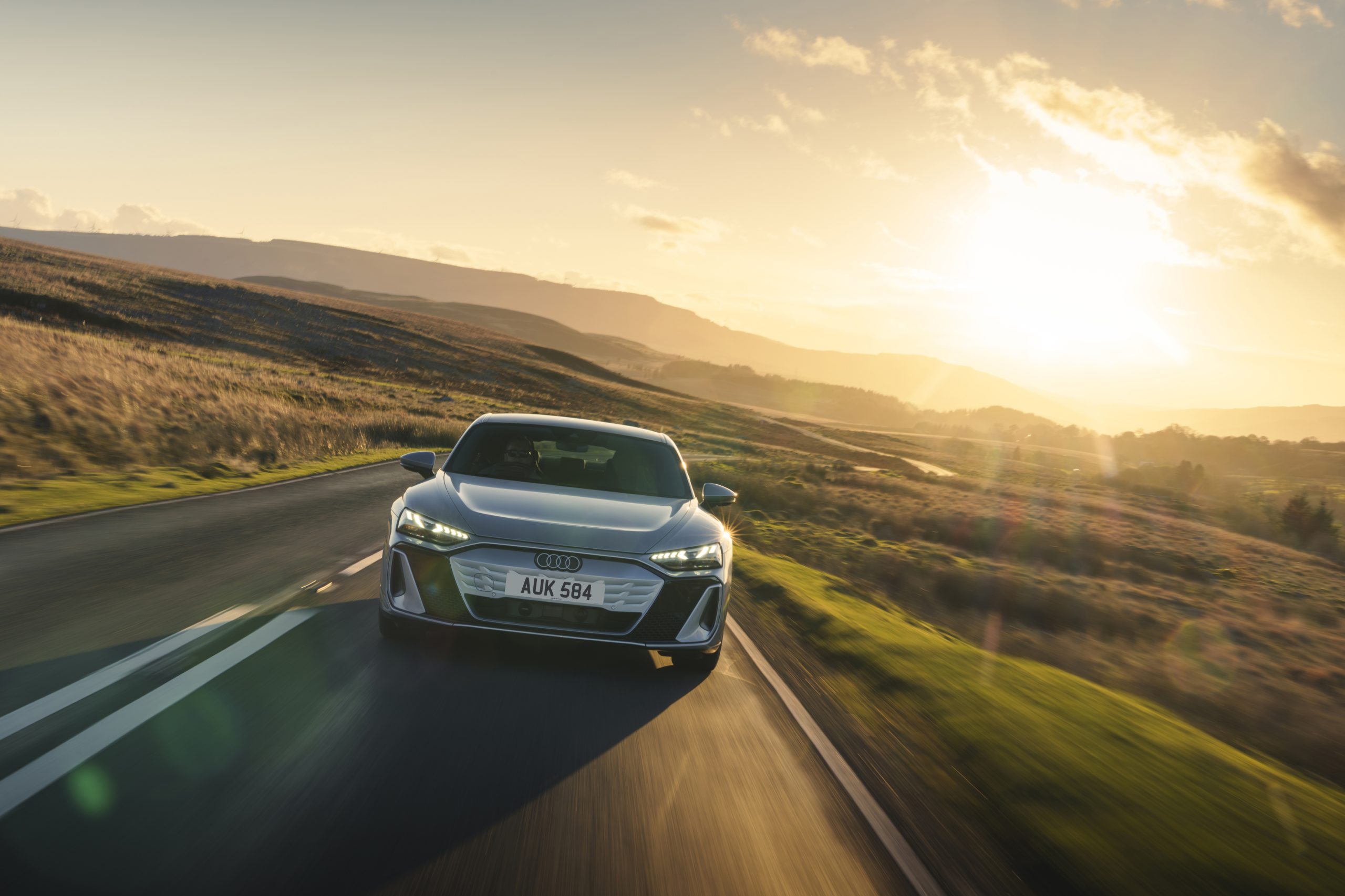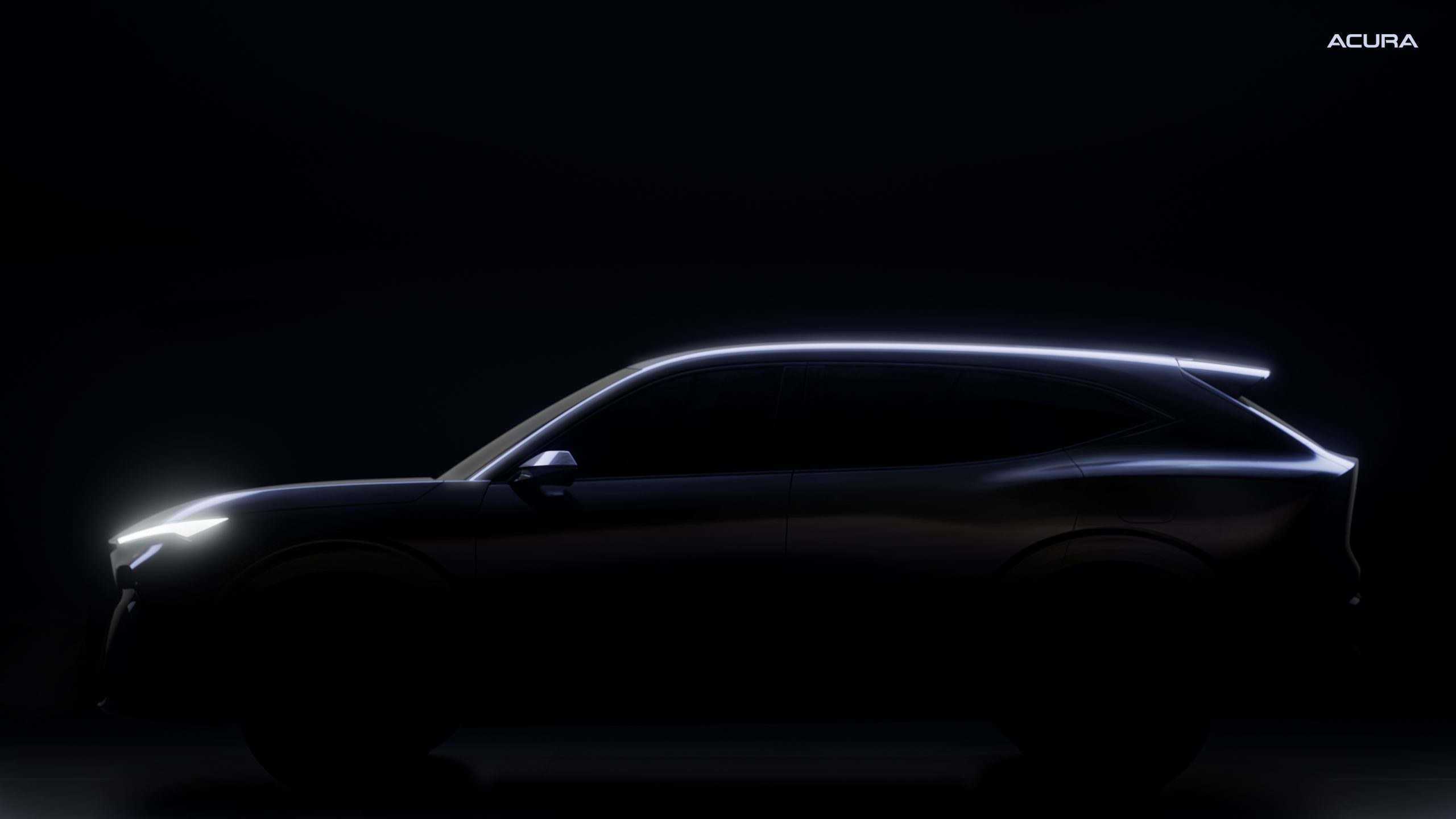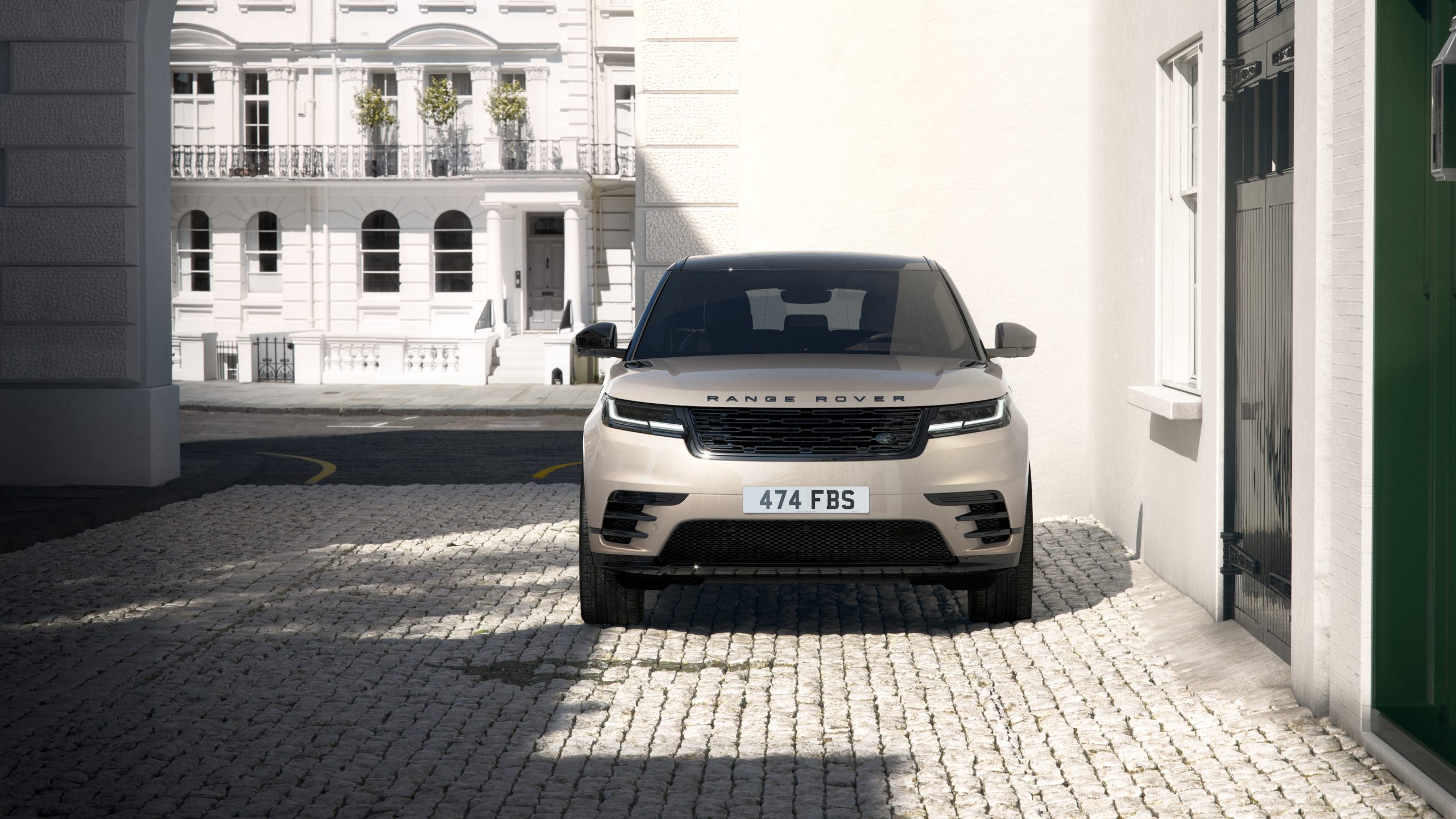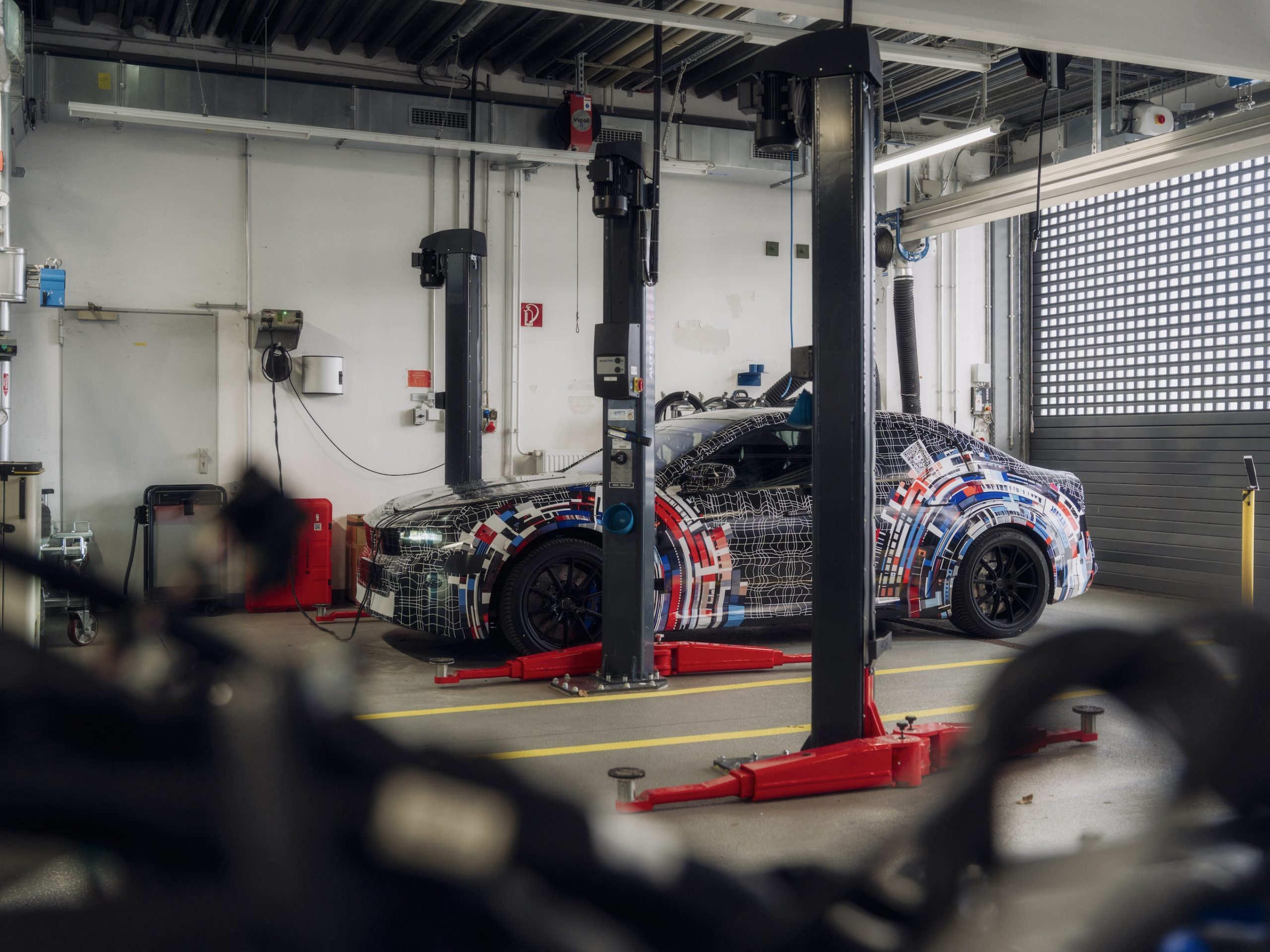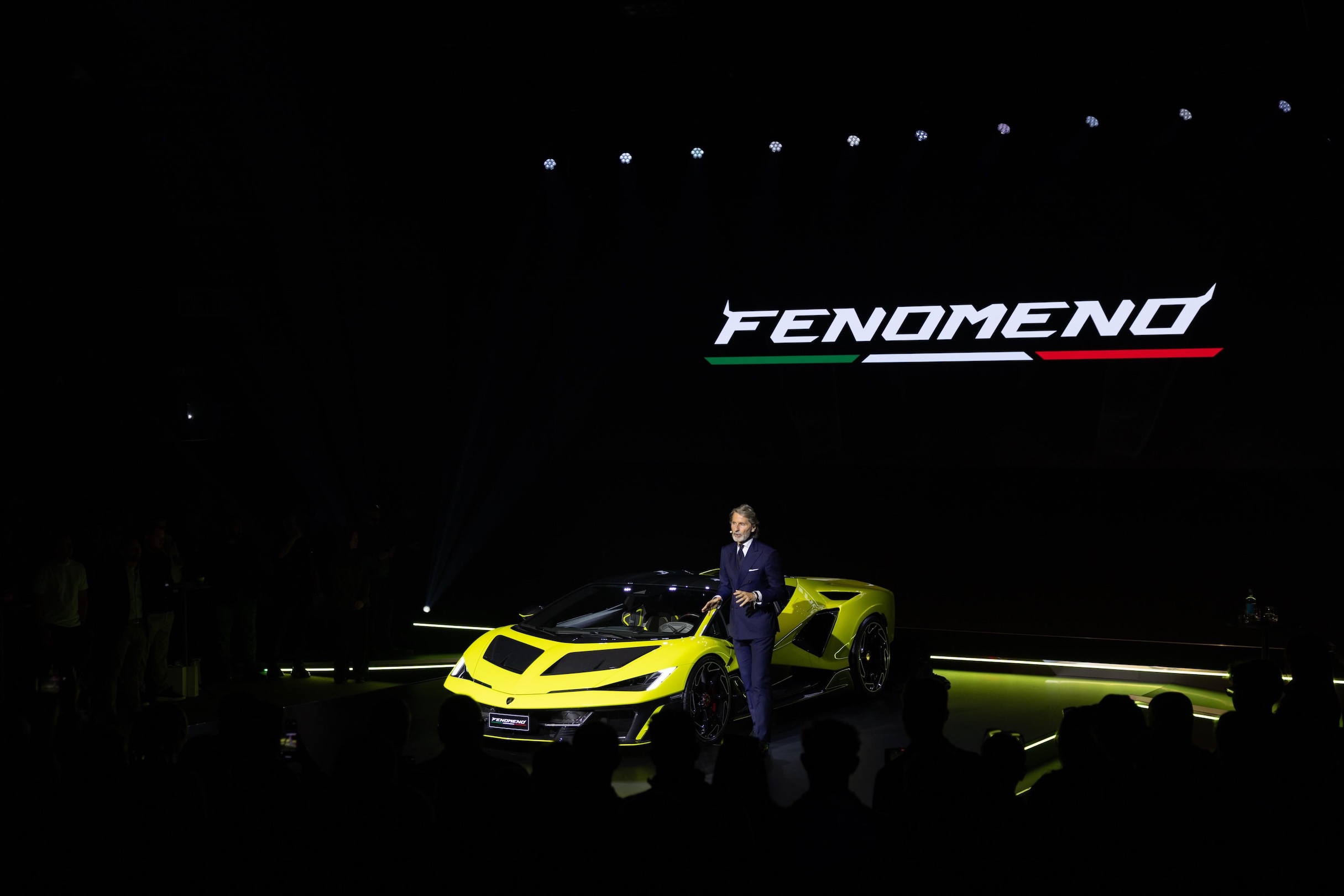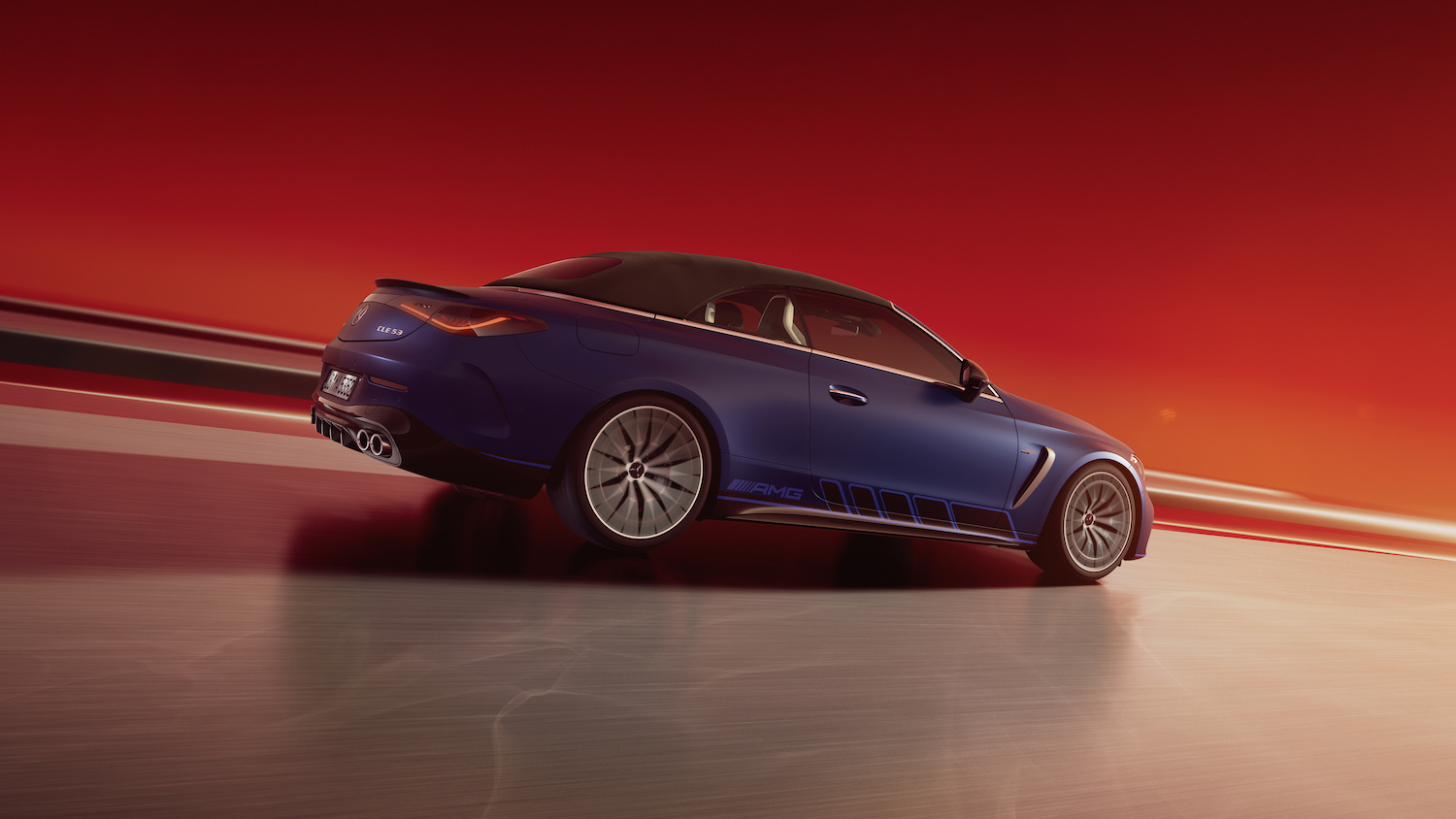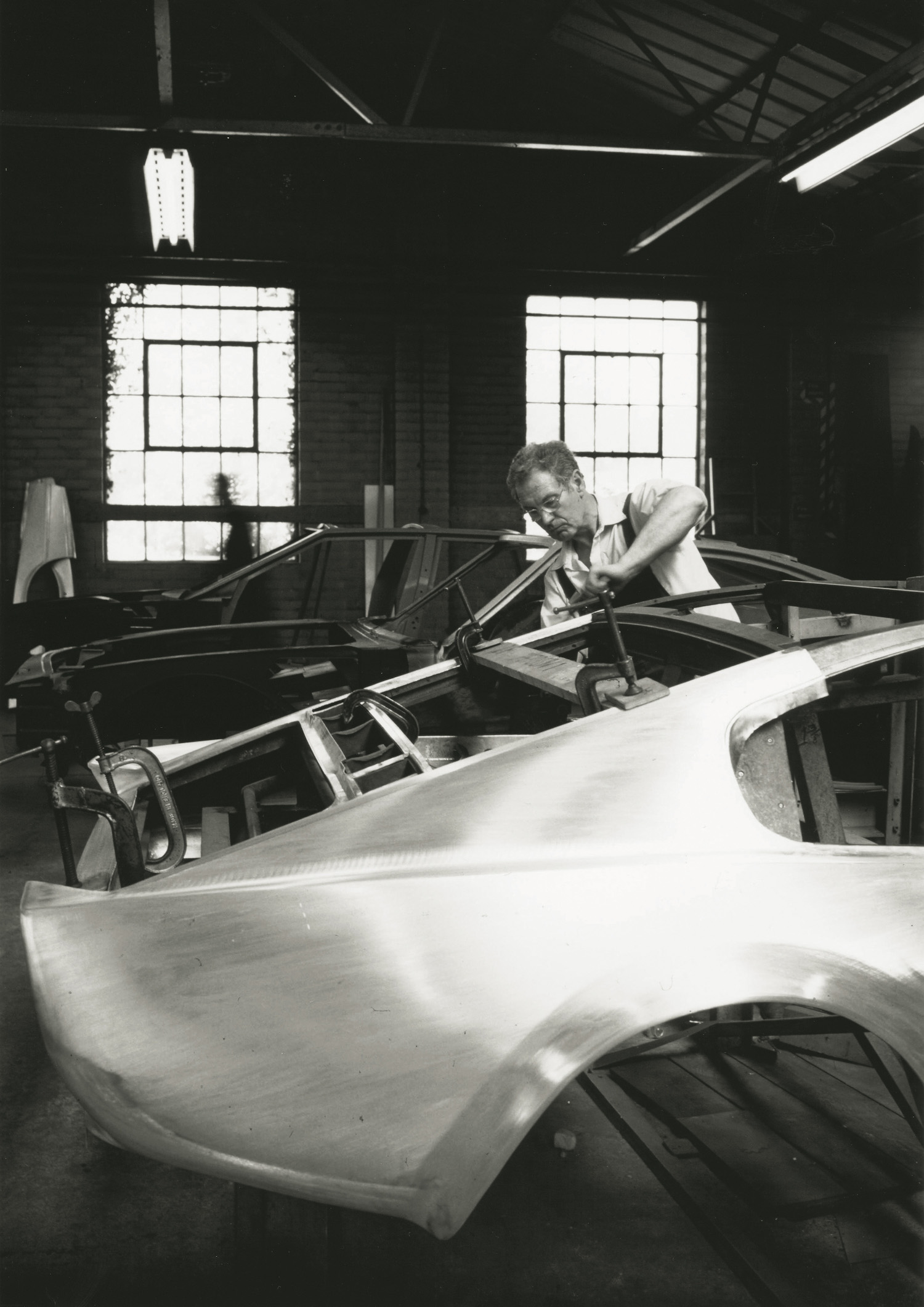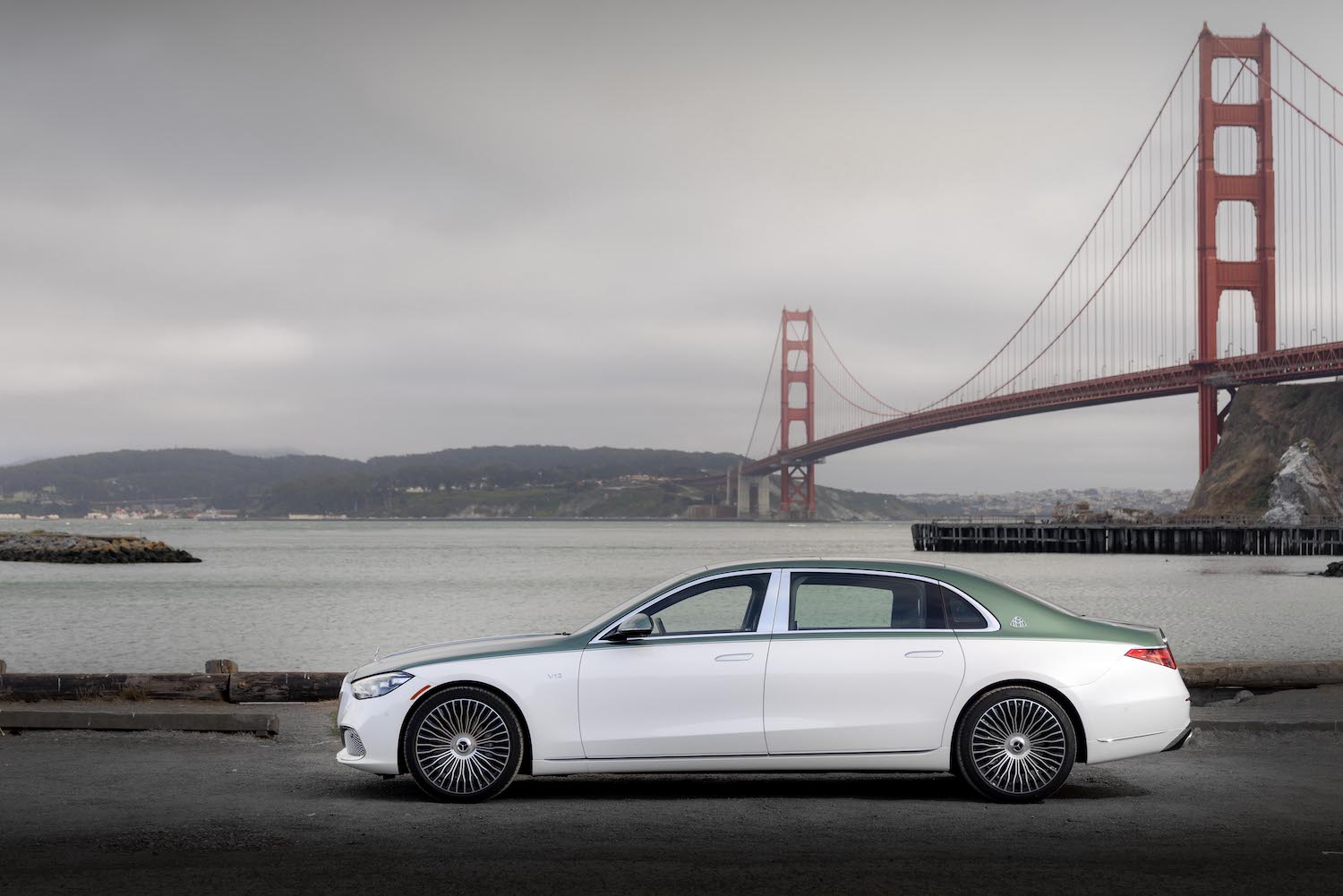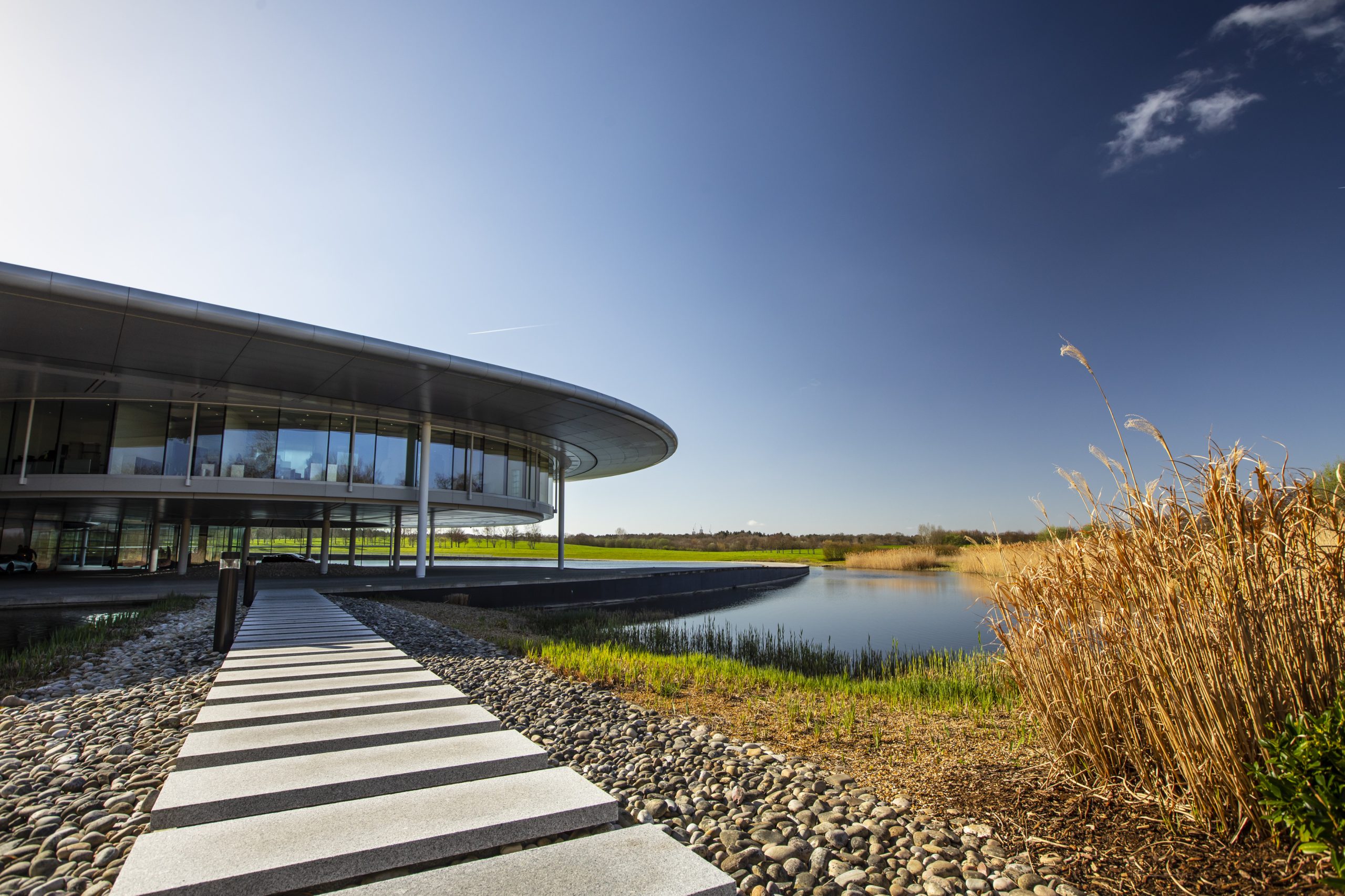The new McLaren W1 is the ground-breaking successor to two of the greatest supercars ever – the McLaren F1 and McLaren P1TM – and elevates the McLaren ‘1’ car lineage to new heights in every aspect of performance.
The Ultimate expression of a real supercar, the new W1 has been created according to the McLaren ethos of class-leading performance, informed by the core principles that underpin every McLaren supercar: epic power applied through cutting-edge aerodynamics and lightweight chassis technologies; the highest levels of dynamic excellence and the purest driver connection; the perfect driver environment, for all driving situations; and awe-inspiring visual and aural drama.
All of McLaren’s significant and renowned expertise in lightweight engineering and aerodynamic performance, inspired by years of racing innovation and the company’s World Championship mindset, was applied to W1. The engineering team behind the new McLaren Ultimate model have between them contributed to 16 McLaren Formula 1 World Championship titles across driver and constructor categories. This expertise as part of a bigger team has resulted in the most focused supercar that McLaren has ever built, but also one with a huge breadth of capability.
“The McLaren W1 is a celebration of both the excellence of the iconic McLaren F1 and McLaren P1TM and the manifestation of McLaren’s World Championship mindset. With our new Ultimate supercar, we are again pushing the boundaries of real supercar performance with an epic hybrid powertrain featuring our all-new MHP-8 V8 engine, the most advanced aerodynamic platform of any McLaren road car and extensive use of advanced lightweight materials. This allows us to engineer a supreme track driving experience from the same car that gives unparalleled driving enjoyment on the road.
“Formula 1-derived aerodynamics, pure rear-wheel drive and McLaren hydraulic performance steering showcase McLaren’s approach to purposeful innovation as a racing company that always delivers the best possible performance. It is therefore no surprise that the new W1 is our fastest-lapping and fastest accelerating road-legal car ever. It also provides the purest driver connection by remaining true to the principles that underpin the ultimate supercar driving experience. This really is a car that only McLaren could create.”
Michael Leiters, Chief Executive Officer, McLaren Automotive
W1 is a supercar for all occasions; more than any other McLaren, it is equally at home on road and track and as the fastest-lapping and fastest accelerating McLaren road-legal supercar yet, is exhilarating to drive whatever the circumstances.
The spine-tingling driver enjoyment ensured by the W1’s revolutionary new high-downforce, low-drag, ground-effect aerodynamics design is further enhanced by the unique transformation process from Road mode to Race mode for track driving: W1’s ride height lowers (by 37mm at the front and 17mm at the rear) and a heave system stiffens the suspension. Front and rear active wings are deployed, with the McLaren Active Long Tail extending rearwards by up to 300mm to assist in generating the 1,000kg of downforce available in W1.
The all-new MHP-8 4.0-litre twin-turbo V8 engine that debuts in W1 is coupled with a power-dense E-module to deliver scintillating speed. The epic power of this all-new 1275PS High-Performance Hybrid powertrain and McLaren’s relentless dedication to lightweight engineering has resulted in levels of performance previously only attainable by track-only supercars and race cars.
Just as the W1 name celebrates McLaren’s World Championship mindset, the date of the public reveal of the car was also chosen with this in mind: October 6th 2024 is the 50th anniversary of Emerson Fittipaldi sealing McLaren’s first Formula 1 Drivers and Constructors World Championships.
Epic performance from V8 High-Performance Hybrid powertrain with pure RWD
At the heart of W1 is an all-new High-Performance Hybrid powertrain, comprising McLaren’s all-new MHP-8 V8 combustion engine, an all-new E-module (integrating a radial flux electric motor and motor control unit), and an 8-speed transmission with E-reverse. Power and torque are to the rear wheels only, through an E-differential.
The 928PS of the new V8 and 347PS of the E-module combine to produce 1275PS, giving W1 the highest-ever power output of any McLaren and putting it above all core competitors. Engineered for epic power delivery and breathtaking performance, the powertrain combines with a vehicle weight of 1,399kg to deliver an astonishing power-to-weight ratio of 911PS/tonne for W1 – the highest-ever for any road-legal McLaren and more importantly, best-in-class.
This huge amount of power, together with total torque of 1340Nm and instant throttle response from the E-module, gives W1 astonishing acceleration figures: 0-100km/h takes 2.7 seconds, 0–200km/h (124mph) is possible in just 5.8 seconds and 0-300km/h (186mph) can be achieved in under 12.7 seconds.
McLaren has challenged convention by choosing to retain the purity of a rear-wheel-drive chassis in a car with this much power and torque, at a time when competitors are turning to front-wheel-drive assistance. Only McLaren could successfully achieve acceleration of this magnitude with dynamic performance to match in a rear-wheel-drive supercar, thanks to its extensive heritage in Formula 1 which exclusively deploys power through the rear wheels to reach the pinnacle of performance and ultimate steering precision.
McLaren’s all-new MHP-8 flat plane crank 90-degree V8 engine is central to the delivery of the W1’s epic power. Designed from the outset to be at the centre of the very best electrified powertrains, the twin-turbocharged 3,988cc unit has a lightweight block, cylinder heads and pistons in aluminium and showcases McLaren’s expertise in engineering combustion engines that set new standards – for example, plasma spray coated cylinder bores are employed to allow engine speeds of up to 9,200rpm.
A 350bar Gasoline Direct Injection (GDI) system and port fuel injection extend the performance scope of the MHP-8 engine without adversely affecting emissions, enabling the highest-ever specific power output in a McLaren – a massive 233PS per litre.
The twin-scroll turbochargers in W1 are optimised to deliver higher peak power and torque than previous components, available throughout the rev range and improved response from as low as 2500rpm.
The exhaust features tubular manifolds that are engineered to maximise driver engagement as well as performance, with long, equal-length runners tuned to build sound to a crescendo as the engine speed approaches its 9,200rpm electronic rpm limit.
The motorsport-derived E-module that works in combination with the combustion engine is mounted to the side of the transmission and contributes up to 347PS. Comprising a radial flux E-motor and integrated Motor Control Unit – an engineering approach similar that taken in IndyCar racing – the E-module is a masterclass in maximising efficiency while minimising package volume and weight, The whole unit weighs just 20kg and further advantages include reducing coolant volume, low-voltage and high-voltage connections and seals. The sealed unit improves serviceability with a dry interface outside of the transmission unit.
The E-motor element is capable of spinning up to 24,000rpm has a specific output of 23PS/kg, which is directly comparable to Formula 1 E-motors.
The E-module is powered by a 1.384kWh battery, which together with the management unit and power distribution unit is enclosed on a structural carbon fibre floor housed within a cavity in the carbon fibre monocoque, located as low as possible to benefit vehicle centre of gravity.
The motorsport-derived battery cells are designed to prioritise high power outputs to the E-module, increasing throttle response and boosting overall power to the levels needed to deliver the eye-watering levels of performance that W1 reaches. Even with this focus on maximising power, the W1 can be driven in zero-emission, electric-only mode for up to 2km (1.6 miles).
The battery state of charge is managed to maintain a minimum level of charge to crank the engine on vehicle start-up, power for the reversing function and a reserve for when the car remains parked for extended periods.
In line with McLaren’s commitment to minimising weight, the total weight of hybrid components has been reduced by 40kg compared to the McLaren P1TM while delivering almost double the electric power. Further weight is saved by the absence of engine ancillaries including the alternator, starter motor and additional pipework required for a conventional HVAC system.
Born from Formula 1-inspired ground-effect aerodynamics
McLaren has been synonymous with aerodynamic innovation and excellence since its very beginnings, with Bruce McLaren himself always determined to push for any advantage offered by new ways of managing airflow to balance lift and drag in the most efficient way possible. The 1967 championship-winning McLaren M6A Can-Am racecar employed ground effect aerodynamics with great success and while it was another decade before the technology came to Formula 1 – and the 1990s before the McLaren F1 showed how effective it could be in a road car – ground effect remains a significant advantage as part of an overall aerodynamic package for those car makers who can master it.
It is no surprise then that the new McLaren W1’s striking design is defined by aerodynamic requirements, with McLaren’s engineers focusing on combining the high downforce and low drag that ground-effect innovations provide to the foundations for the new Ultimate McLaren’s extraordinary abilities.
The aerodynamic platform of W1 is the most advanced ever in a McLaren road car, the result of 350 hours of wind tunnel sessions with 5000 points tested. The concept begins with the Aerocell monocoque, which is shaped to facilitate full ground effect aerodynamics. Featuring integrated seating – which saves almost 70mm in wheelbase requirement – and raised footwells with an adjustable pedal box and steering to ensure the optimum driving position, the Aerocell is unique to W1, which also features the highest number of aerodynamic and active surface areas of any McLaren.
The Aerocell also incorporates fixings for McLaren’s first-ever Anhedral doors. The decision to adopt this door concept was dictated by aerodynamic requirements demanding a door design that is hinged only from the roof. In conjunction with the reduced-size side window drop glass, the McLaren Anhedral Door allows optimisation of airflow from the front wheel arches into the high temperature radiators, providing extra cooling space that allows the size of the radiators required to cool the powertrain to be reduced, optimising packaging and saving weight. The fact that the door shape is reminiscent of the bodyside of the McLaren MCL38 Formula 1 car is also a neat visual signature.
The W1 builds on the Formula 1-inspired aerodynamic innovation that first distinguished the McLaren P1TM from its competition and has been honed in subsequent McLaren cars. The attention to aerodynamic requirements in W1 even extends to the powertrain, which is inclined by 3 degrees to accommodate the car’s high-downforce rear diffuser.
The key to W1’s duality of dynamic character – offering a sublime driving experience on road and track alike – is McLaren Race mode. When deployed, this engages shape-shifting aerodynamic technologies to enable world-best, radical ‘road to track’ character transformation. Uniquely in W1, much of the downforce is achieved using all of the underbody for ground effect, with this maximised when Race mode is selected.
The lowering of ride height – by 37mm at the front and 17mm at the rear – and deployment of active front and rear wings is not just theatre: in Race mode W1 is capable of generating up to 350kg of downforce at the front and 650kg at the rear, giving total downforce of up to 1000kg in high-speed corners.
The active front and rear wings and a roof-mounted air flow diverter W1 are among the most advanced aerodynamic features ever in a road-legal McLaren. The revolutionary McLaren Active Long Tail rear wing – arguably visually the single most dramatic element of the new W1 – is absolutely integral to the aerodynamic performance of the car. McLaren’s first association with a ‘longtail’ name dates back to the 1997 F1 GTR, but in the case of this new Active Long Tail wing it is an essential part of the strategy for management of drag, lift and downforce.
Actuated by four E-motors and moving up, down, and – depending on whether the W1 is in Road mode or Race mode – also 300mm rearwards and adjusting in pitch, the McLaren Active Long Tail extends the working area of the rear diffuser in Race mode and is key to the generation of downforce. It also operates in DRS and airbrake configurations as required to help optimise aerodynamic balance.
The front wing is actuated by two E-motors and swings through an arc to create a full-width lower frontal area, feeding air under the car in Race mode via a Formula 1-style T-tray and keel. The two wings work in conjunction with each other and other elements of the design to allow fast and accurate management of aerodynamic requirements.
For road driving the Active Long Tail wing sits over the rear bodywork and front and rear wing deployment is optimised for this environment, with the front wing sitting higher at low speeds to avoid damage from speed bumps. W1’s vehicle lift system further reduces this risk.
The design of the front suspension also contributes to aerodynamic efficiency, with the lower wishbones of the pushrod and inboard damper system raised significantly to keep the channel of air flowing cleanly towards the rear of the car. Other components have an optimised aerodynamic profile to further assist. Conditioning airflow at the rear of the car is less of a priority since the diffuser manages this function, meaning outboard springs and dampers are the optimum solution.
Dynamic genius without compromise, driven by McLaren DNA
McLaren’s philosophy of Lightweight Engineering and the use of bespoke carbon fibre structures deliver a vehicle lightest dry weight of just 1,399kg for W1, which is key to the requirement for outstanding performance, everywhere – whether on road or on track.
The all-new McLaren Race Active Chassis Control III suspension with McLaren Race mode ensures huge breadth of capability, from road-legal compliance to fastest lap performance and pure driver connection.
The Comfort handling setting gives the occupants a smooth ride quality with increased body control at medium and high speeds, while Sport provides a more engaging, connected setup with focus on body control and agility at all speeds. When Race mode is selected a stable aerodynamic platform is prioritised, with an active heave element deployed for superior track dynamics and consistent downforce.
W1’s suspension system works in combination with the front and rear active aero features integrated into a unique underfloor design delivering ground affect aerodynamics. This allows the required levels of load and grip to deploy the torque through the driven axle, mitigating the need for all-wheel-drive and therefore the additional weight required on the front axle. The ability to manage such a high level of torque on rear axle only is a key enabler to preserve McLaren’s best-in-class McLaren Hydraulic Performance Steering feedback and feel on the front axle.
Continuing the Formula 1 influence, the front suspension setup also includes titanium torsion bars and an active heave element crosslink, while the rear has a Z-bar with active droplinks to control heave. In the relentless pursuit of light weight, 3D printing was used for the front uprights and wishbones of the advanced suspension system.
Braking on W1 is a further advance on McLaren’s renowned high-performance hydraulic system, enhanced to meet the differing demands of flawless road and track response and feel while delivering Ultimate stopping power. W1 will come to a standstill from 100km/h in 29 metres and from 200km/h in just 100 metres.
The front brakes are activated with 6-piston calipers and the rear by 4-piston calipers, both of a forged monobloc design. The 390mm discs in the McLaren Carbon Ceramic Racing+ (MCCR+) system are unique to W1, featuring an additional ceramic layer compared to previous carbon ceramic discs. This provides greater durability while allowing for a more aggressive brake pad and higher friction levels to further increase braking efficiency.
Brake performance is further optimised with aerodynamic features to keep the system cool. Directly inspired by Formula 1-style ducts, these have been designed to also increase downforce and radiator cooling by managing the wake of the tyres, while the brake lines have been routed to minimise airflow disruption under the car.
The electronic parking brake is integrated on the rear calipers, saving weight while at the same time improving component stiffness.
The fastest lapping and fastest accelerating road-legal McLaren ever
Bettering even the super-lightweight and track-focused McLaren Senna – by an astonishing 3 seconds a lap at McLaren’s Nardo reference circuit – W1 is also the fastest accelerating road-legal McLaren ever. Hugely impressive in isolation, these two parameters are even more incredible when you consider that you need both high downforce and very low drag to achieve them.
Inspired by the work of generations of Formula 1 Race Engineers, McLaren’s Race mode gives a choice of two suspension settings – Race and Race+, with the latter being the firmest available. This allows drivers to select settings according to whether they are on undulating, bumpy tracks where consistent aerodynamic downforce is needed, or flat, smooth surfaces on which the ground effect platform is optimised.
Powertrain options in Race mode are a ‘GP’ setting for consistency over a longer track session, or ‘Sprint’ for maximum performance and E-module deployment over one lap. Two buttons on the steering wheel, ergonomically positioned within easy reach of the driver’s thumbs, give the driver further options: ‘Boost’ instantly deploys full E-module power available – the same principle as employed in Formula 1 – to give the driver everything for overtaking on track or additional speed out of corners as desired. This can be combined with the Aero button for an on-demand Drag Reduction System (DRS) effect from the rear McLaren Active Long Tail wing.
Tyre performance is intrinsic to mechanical and aerodynamic grip and W1 features three 265/35 front and 335/30 rear tyre options from McLaren’s technical partner, Pirelli. To fit the car’s extreme requirements, the Pirelli P ZEROTM Trofeo RS road legal track tyre is the standard fitment. The tyre has a compound specially developed to maintain the highest performance and consistent grip over a track session. Pirelli P ZEROTM R and Pirelli P ZEROTM Winter 2 tyres – again both bespoke to W1 – are also available, the former being a road-focused solution and the latter delivering outstanding cold weather performance.
The perfect supercar driving environment
The excitement of driving W1 begins with the McLaren Anhedral Doors opening upwards to reveal recesses in the roof and the front lower opening that help to provide access to the innovative and comfortable cabin. The doors also feature a sculpted concave section on the inside to maximise occupant space.
As is core to the McLaren DNA, W1 has unmatched supercar ergonomics and best-in-class visibility, with remarkably spacious cockpit room for both driver and passenger. Glazed sections in the rear three-quarter view and optionally in the upper doors provide an airy feel to the interior. Forward vision is exceptional, with the W1 incorporating McLaren’s narrowest A-pillars yet. Even the sun visors are designed with lightweighting in mind; made from carbon fibre, they are just 3mm thick.
Seating is uniquely integrated into the McLaren Aerocell carbon fibre monocoque, directly connecting the driver – and passenger – to the chassis. Both seats are fully upholstered for optimal support and comfort and provide a driving position that is more reclined than usual, with a high level of thigh support.
The pedals, steering wheel and primary controls move to fully embrace the driver within the cockpit environment, with a perfect driving position easily found by adjusting the floor-mounted aluminium pedals, which have a unique adjustment action. The unique-to-W1 wheel is smaller and flatter than previous McLaren steering wheel designs. Integral shift lights that prompt the driver to select the next gear as the 9,200rpm redline approaches, are optionally available.
True to the McLaren supercar principle of a pure driver-focused interface, the only two buttons on the steering wheel are Boost and McLaren Aero Deployment controls. Inspired by Formula 1, these have been ergonomically designed to be easy to reach and activate by the driver moving their thumbs and not their hands from the wheel.
Chassis and powertrain modes are adjusted via rocker controls on the instrument binnacle, which moves with the steering column to allow mode adjustments within easy reach of the wheel. The W1’s driver display has been engineered to ensure the full screen remains visible to the driver despite the smaller steering wheel and even doubles as an aerodynamic flow diverter for air from the compact HVAC system – which efficiently provides cool or warm air as desired in all driving modes, including EV-only operation.
Further theatre is provided by overhead start/stop, gear selection and Race mode switchgear together with the window controls. These are housed by the digital rear-view display; designed to resemble a conventional rear-view mirror for driver familiarity, the camera position and angle is deliberately placed to discreetly display a small section of the Active Long Tail wing in order to give context and perspective to the driver’s rear view to ease vehicle positioning in traffic and low-speed manoeuvring including parking.
Further information and adjustments can be found on the high resolution 8” touch screen McLaren Infotainment System (MIS II) located between the driver and passenger. This has Apple CarPlay with USB C connectivity, with USB A also provided for device charging and storage access.
Between the fixed seats there is a storage area with a sliding cupholder, while there is a second area for small items behind the armrest. The W1 also has a luggage stowage shelf behind the seats, accessible by moving the headrests, which fold flat forwards to provide a loading platform. With up to 117 litres of storage space, two weekend bags or two crash helmets can be accommodated.
Visually arresting engineering
McLaren’s Performance by Design strategic approach centres on the five key principles of McLaren’s design DNA – Epic, Athletic, Functional, Focused and Intelligent – and the new W1 clearly meets this brief. The heavily sculpted form – with almost every panel made from carbon fibre – is immediately recognisable as a McLaren supercar and a bold visual demonstration of the W1’s duality of character, the smooth, flowing upper surface contrasting with the extreme and uncompromising ground effect underbody.
The front aspect of W1 showcases its aerodynamic brilliance, with a large amount of lower bodywork layering designed to condition the flow of air towards aerodynamic surfaces heading towards the rear of the car. The upper nose section features intakes around the lights and upper wheelarches, with a large single nostril in the centre of the bonnet. At the rear of this is an aerodynamic blade that lifts to reveal the EVSE charging port, brake and washer fluid reservoirs. Visible carbon fibre aerodynamic structures and exposed suspension components are also a theme that echoes throughout the car.
The side aspect of W1 is influenced by Formula 1 sidepod design, with a wide cut-out for the convex-shaped door that creates space for air to exit the front wheel arch via two outlets – through which the front suspension arms can be seen – and two large intakes ahead of the rear section. The most prominent of these, which feeds the high temperature radiators, is triangular in shape and provides an undercut in which the second intake is located ahead of the rear wheel and features a channel that feeds the rear diffuser and brake ducts. Even the side mirrors have been designed with aerodynamics in mind; they are placed as far outboard as possible on a support blade and are shaped to direct their wake away from the rear of the car so as not to disrupt efficiency of the radiators or the Active Long Tail wing.
The heavily-haunched rear bodywork includes an intricately detailed engine cover that sits below the flow diverter, which also houses the shark fin audio and navigation antennae and sits above and forward of the central stop light and rear-view camera. This directs clean air towards the twin-element Active Long Tail wing, which sits above the large twin centre-exit exhaust. Completing the muscular rear section is the prominent multi-fenced rear diffuser.
Seen from above, W1’s form is remarkably clean for an aerodynamically-led design, with a pronounced hammerhead-shaped nose and tight teardrop cabin form, which then opens up to the McLaren Active Long Tail wing. This is contrast to the strikingly complex lower bodywork, which is intentionally detailed to fully optimise ground effect.
Exceptionally individual and uniquely desirable
Virtually unlimited bespoke personalisation is available through McLaren Special Operations, giving owners freedom to create their very own unique supercar. A range of luxury and innovative interior materials are available, including the world-first use of McLaren InnoKnit, an infinitely flexible and super-lightweight material tailored to seamlessly integrate interior surfaces and components. This material is knitted to fit, removing any wasteful cutting or sewing requirements.
InnoKnit can be tailored to many and multiple colours, textures and shapes with precision patterns and has also been integrated into audio and visual elements, with the use of graphic elements to diffuse and project ambient cabin lighting. The material can also be incorporated into the speaker grilles of the W1’s high-specification Bowers & Wilkins bespoke audio system.
The W1’s exterior details, including the use light and dark body surfaces partly inspired by its aerodynamic styling but also current Formula 1 livery design, also creates limitless opportunities for customers to personalise their own car with McLaren Special Operations (MSO) using visualisation tools including virtual reality and augmented reality to create their own unique W1.
Ultimate warranty provision with servicing and maintenance to match
Every W1 comes as standard with a comprehensive warranty [4-year/unlimited mileage vehicle; 6-year/75,000km HV battery] and a 4-year inclusive service plan that complements a unique ownership experience.
The new hybrid powertrain has been developed to a maintenance cycle similar to the V6 hybrid powertrain and the service schedule for W1 will follow a 12-month cycle. This is in line with McLaren series production supercars rather than schedules of many track-focused cars which have reduced service intervals based on the number of hours of running.
With the 399 examples of W1 that will be built all allocated. Further information about the W1 can be found at: https://cars.mclaren.com/en/W1
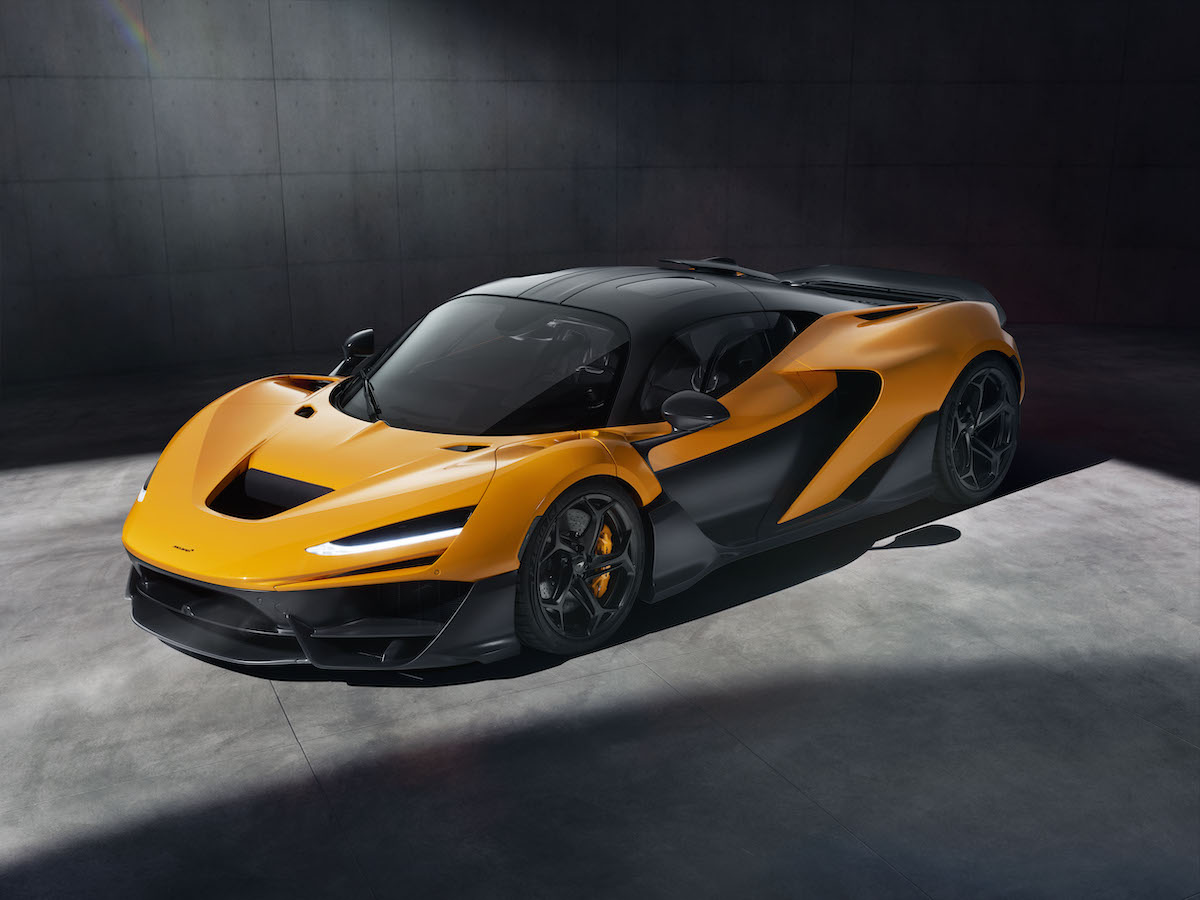
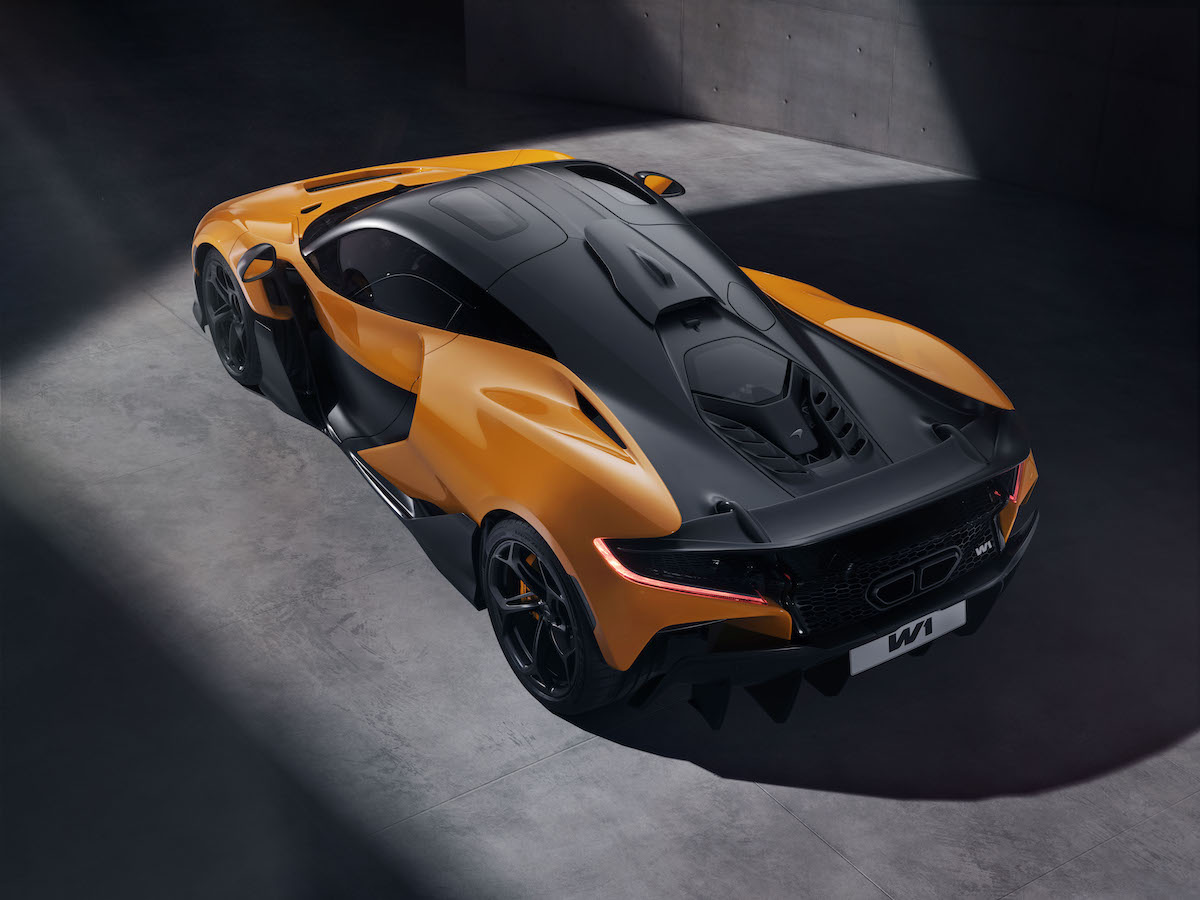
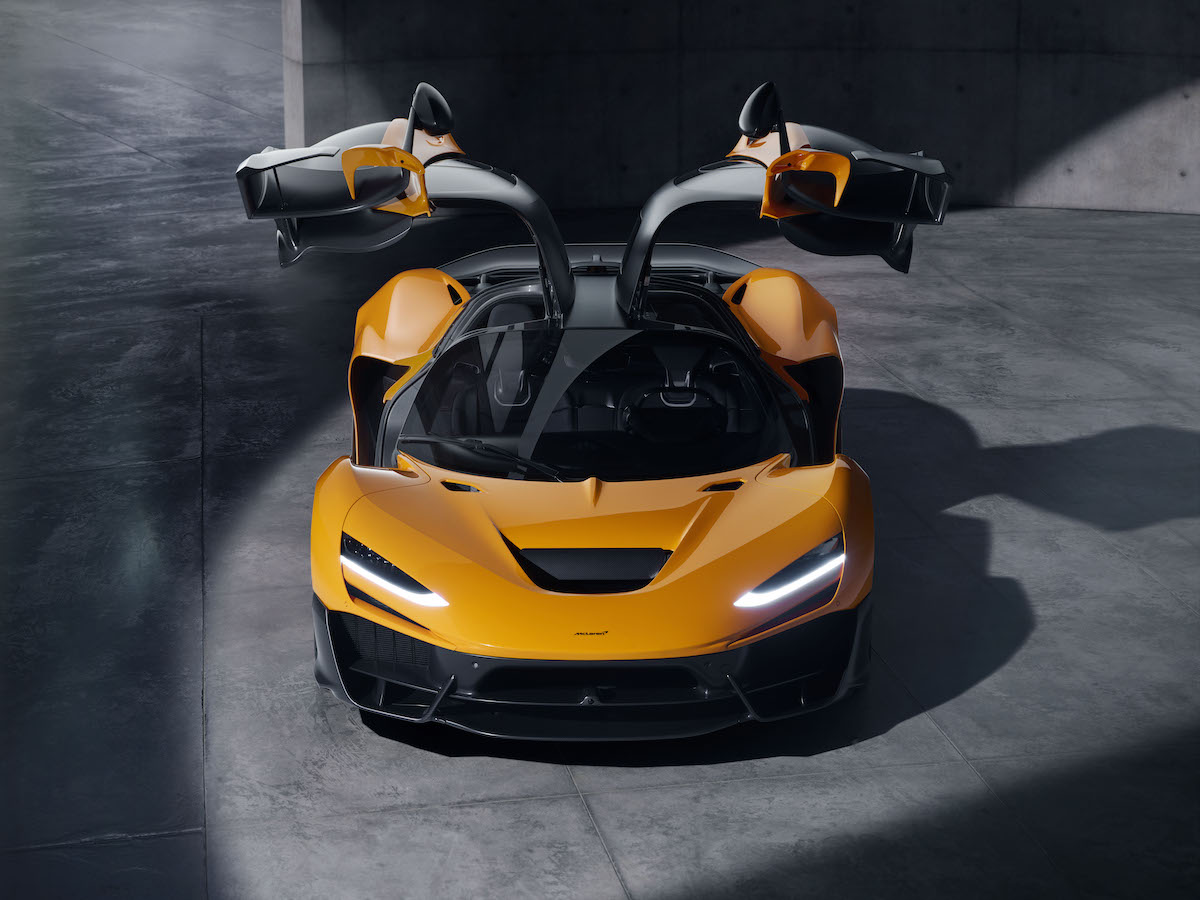
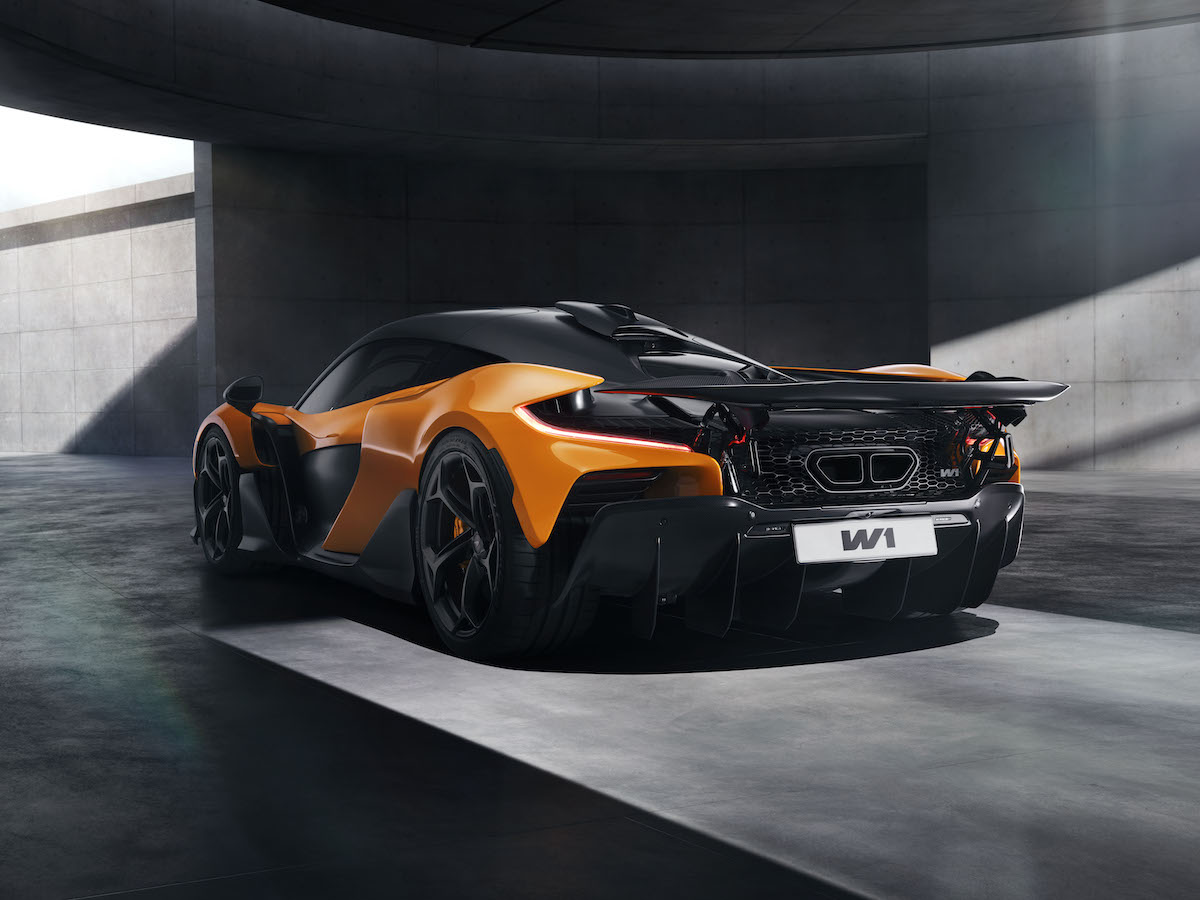
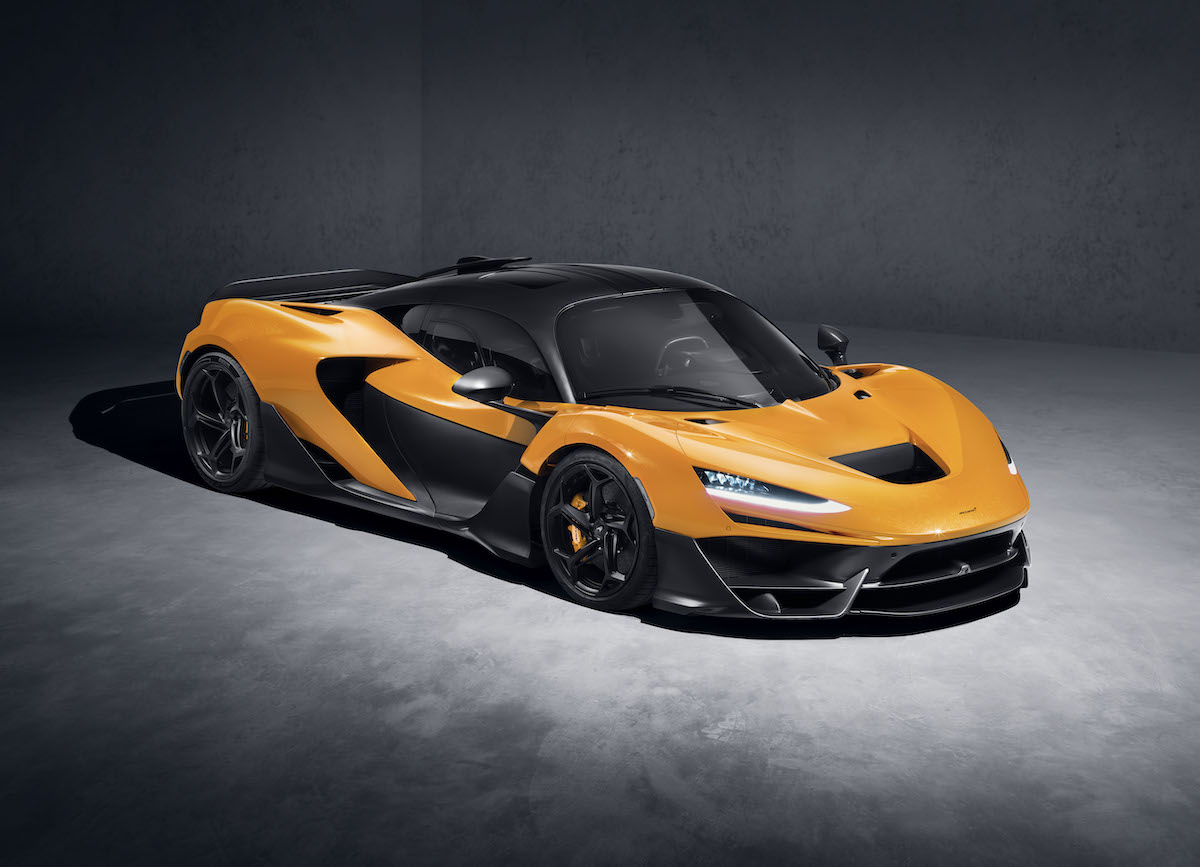
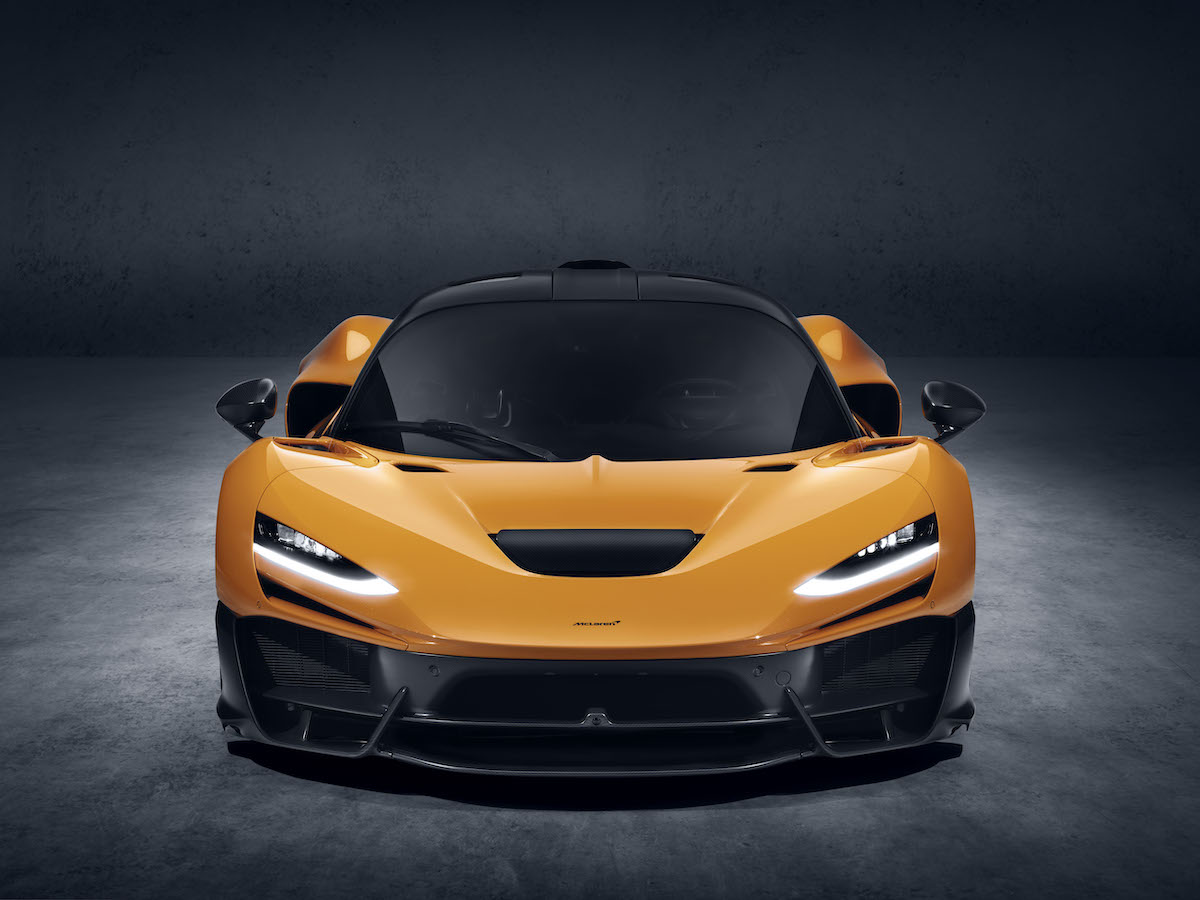
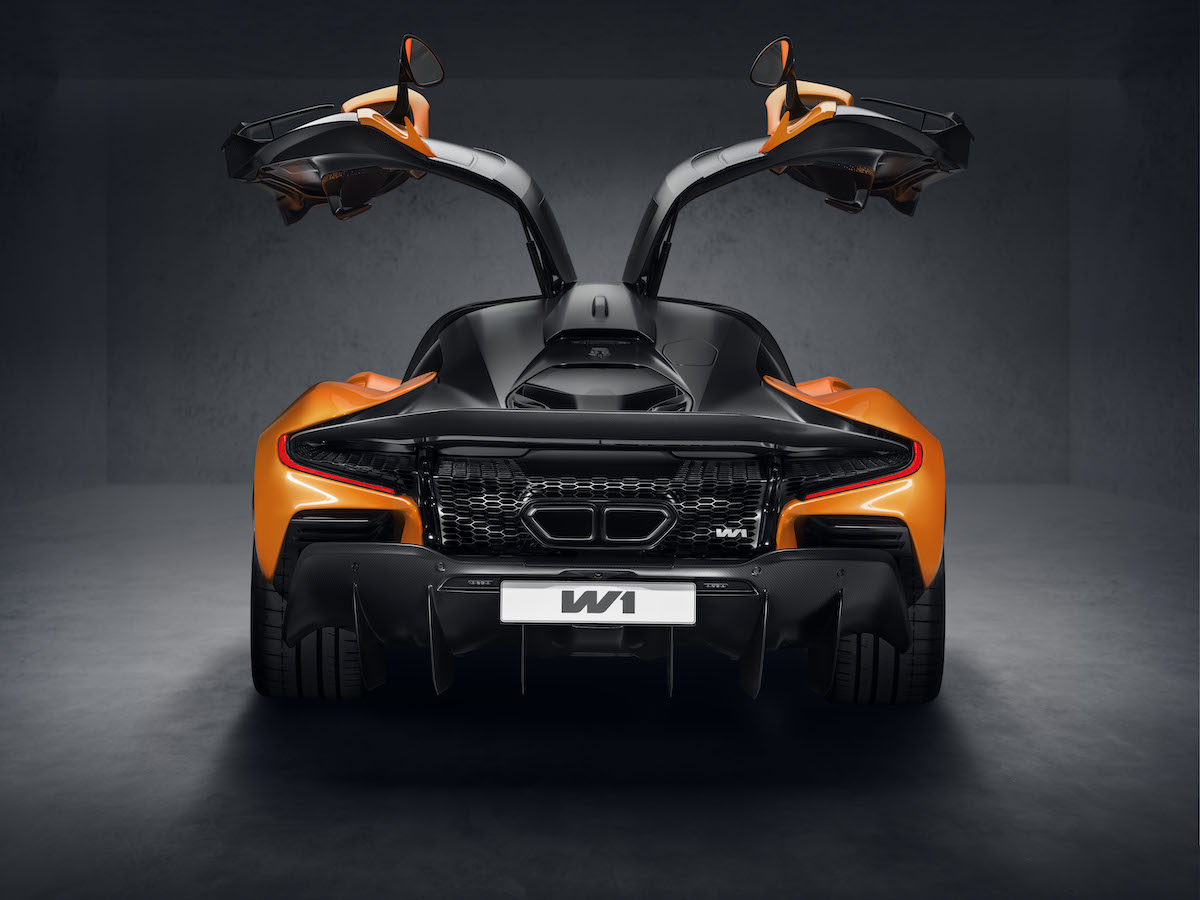
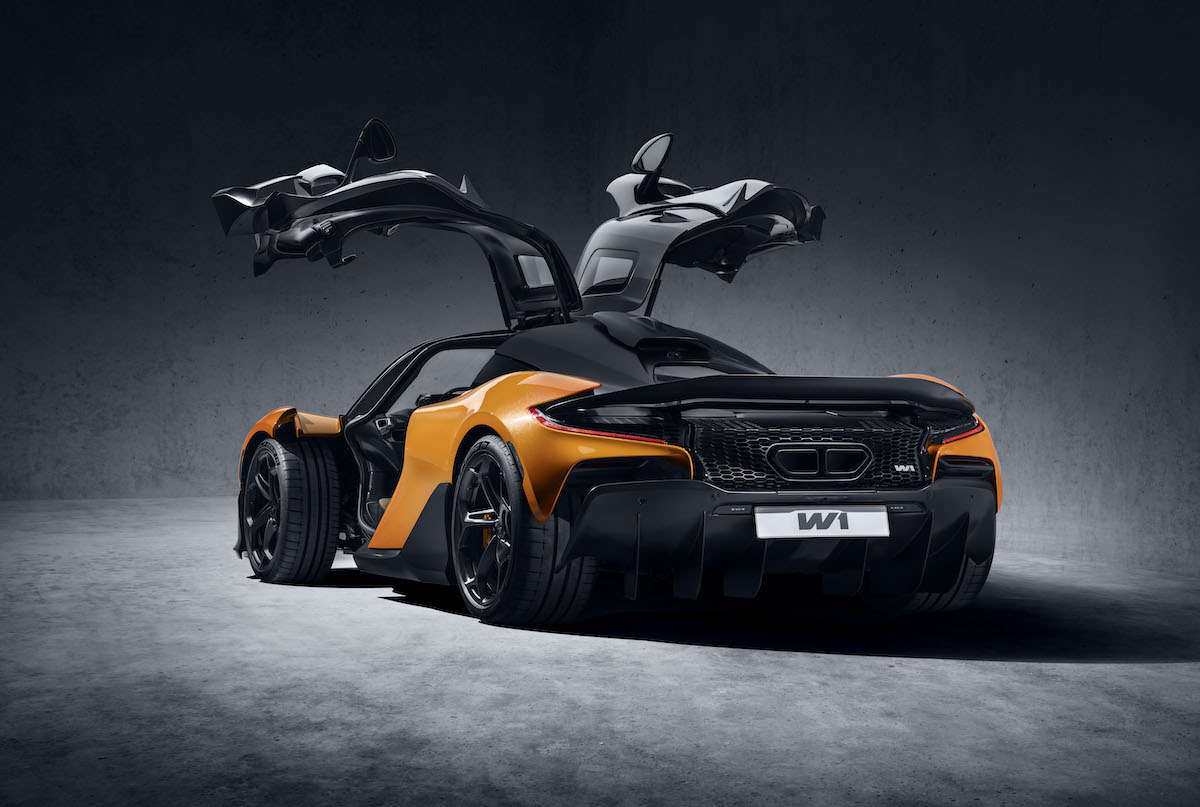
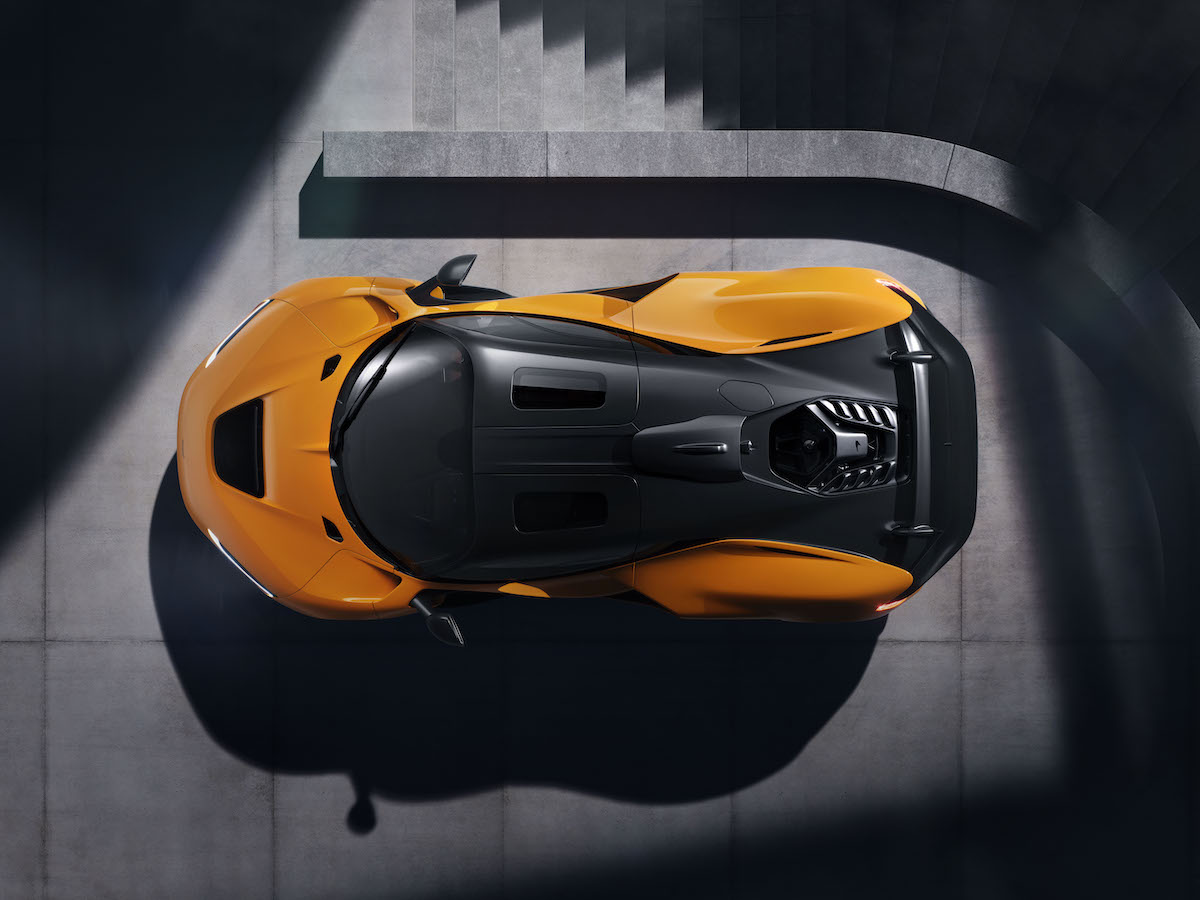
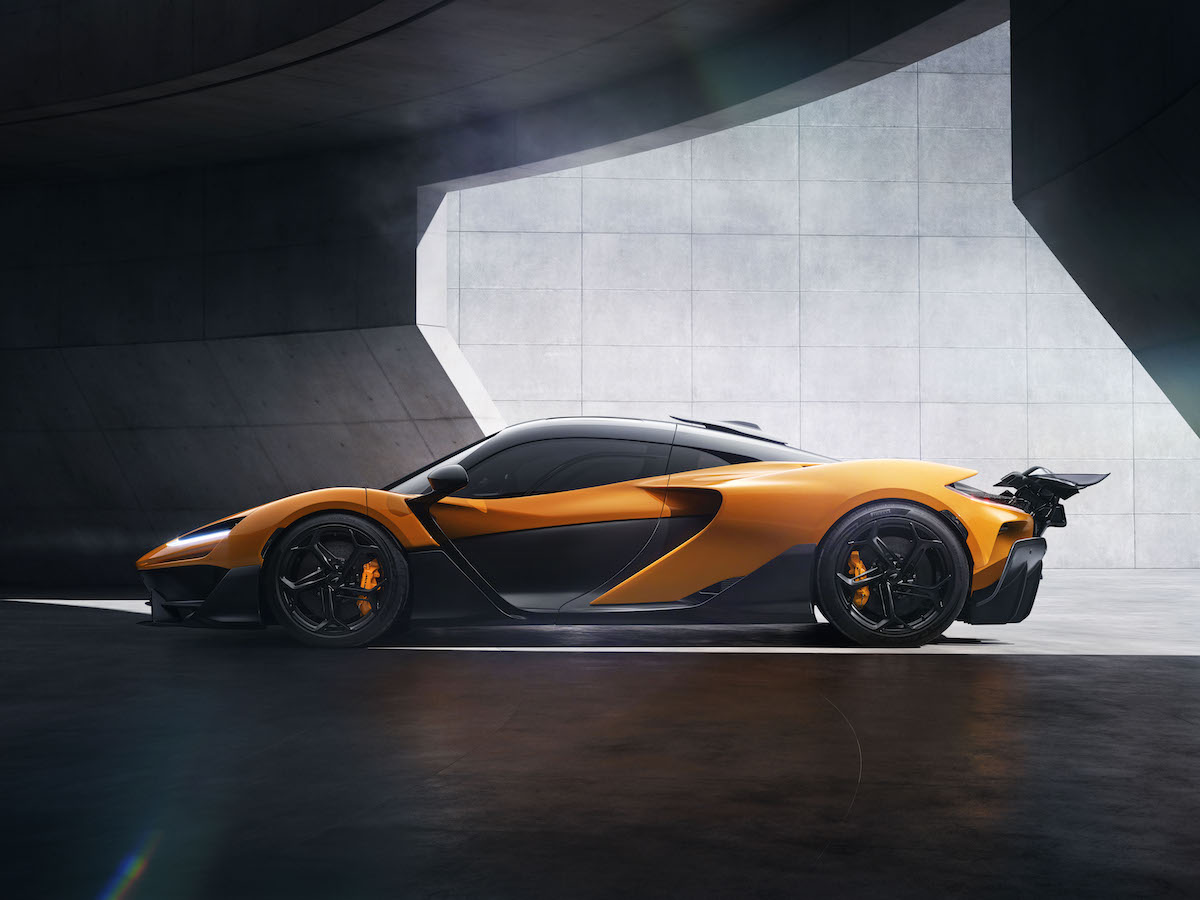
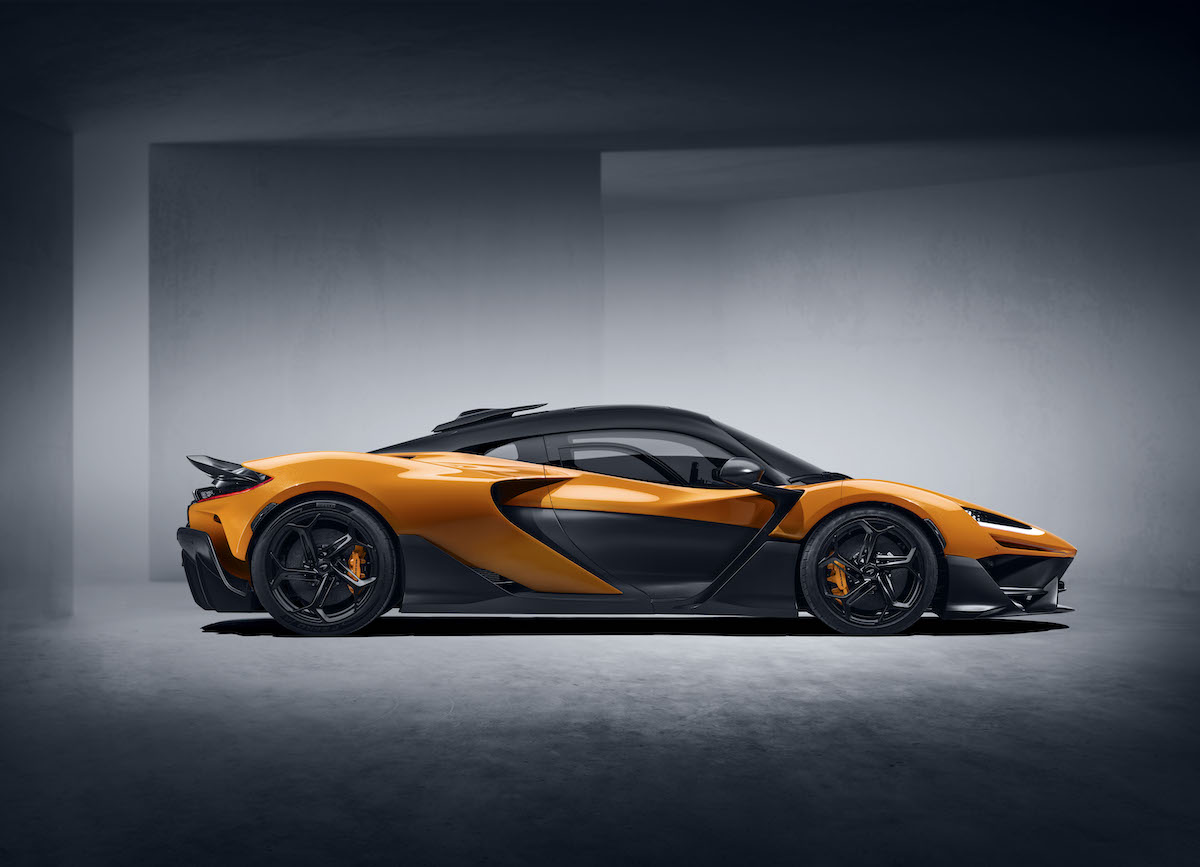
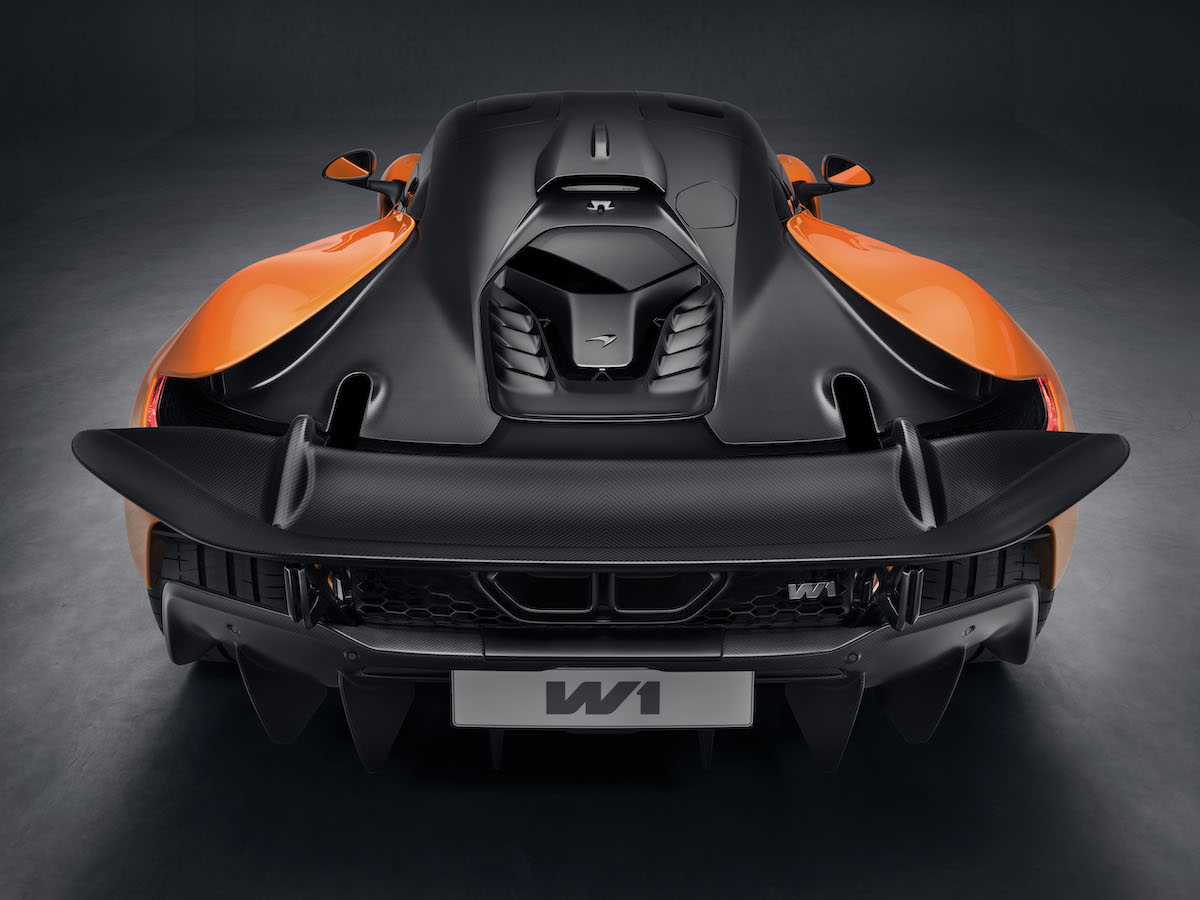
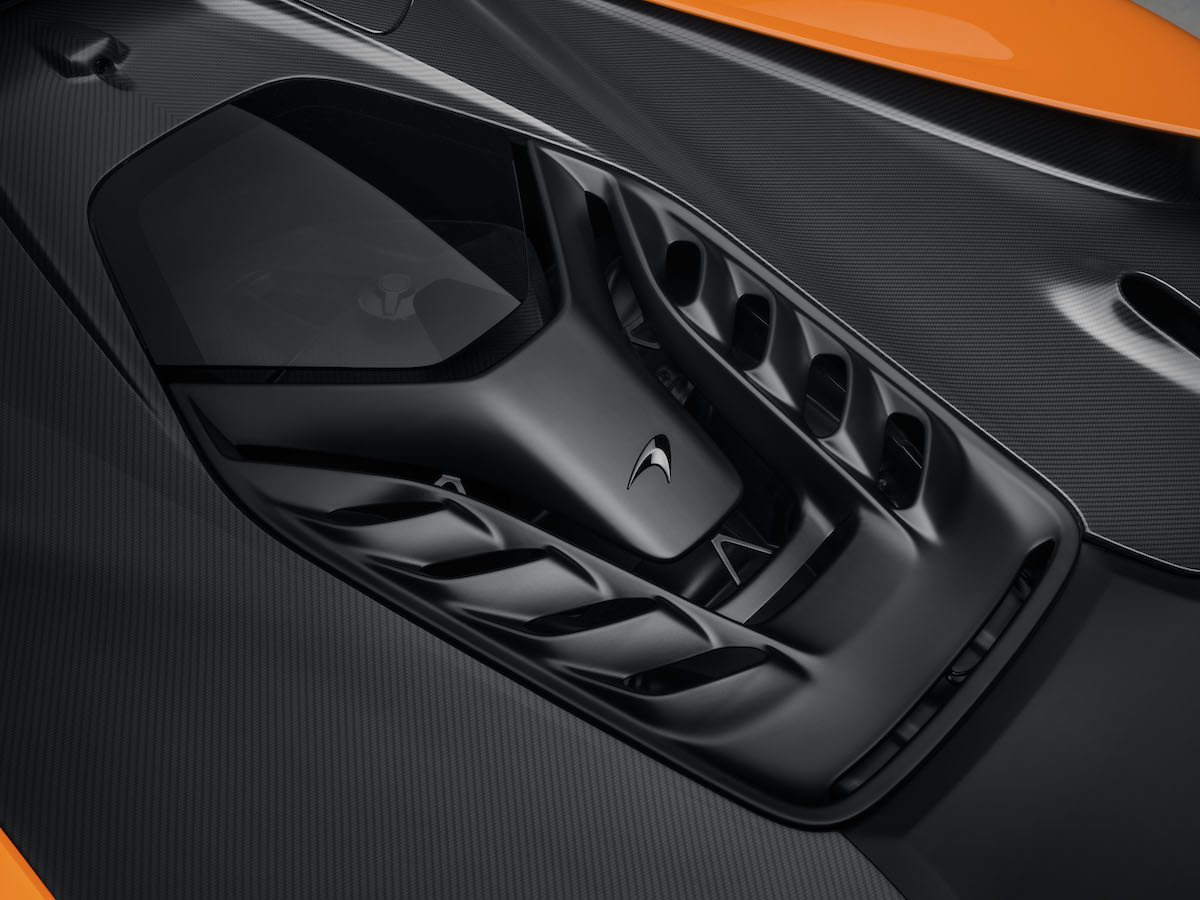
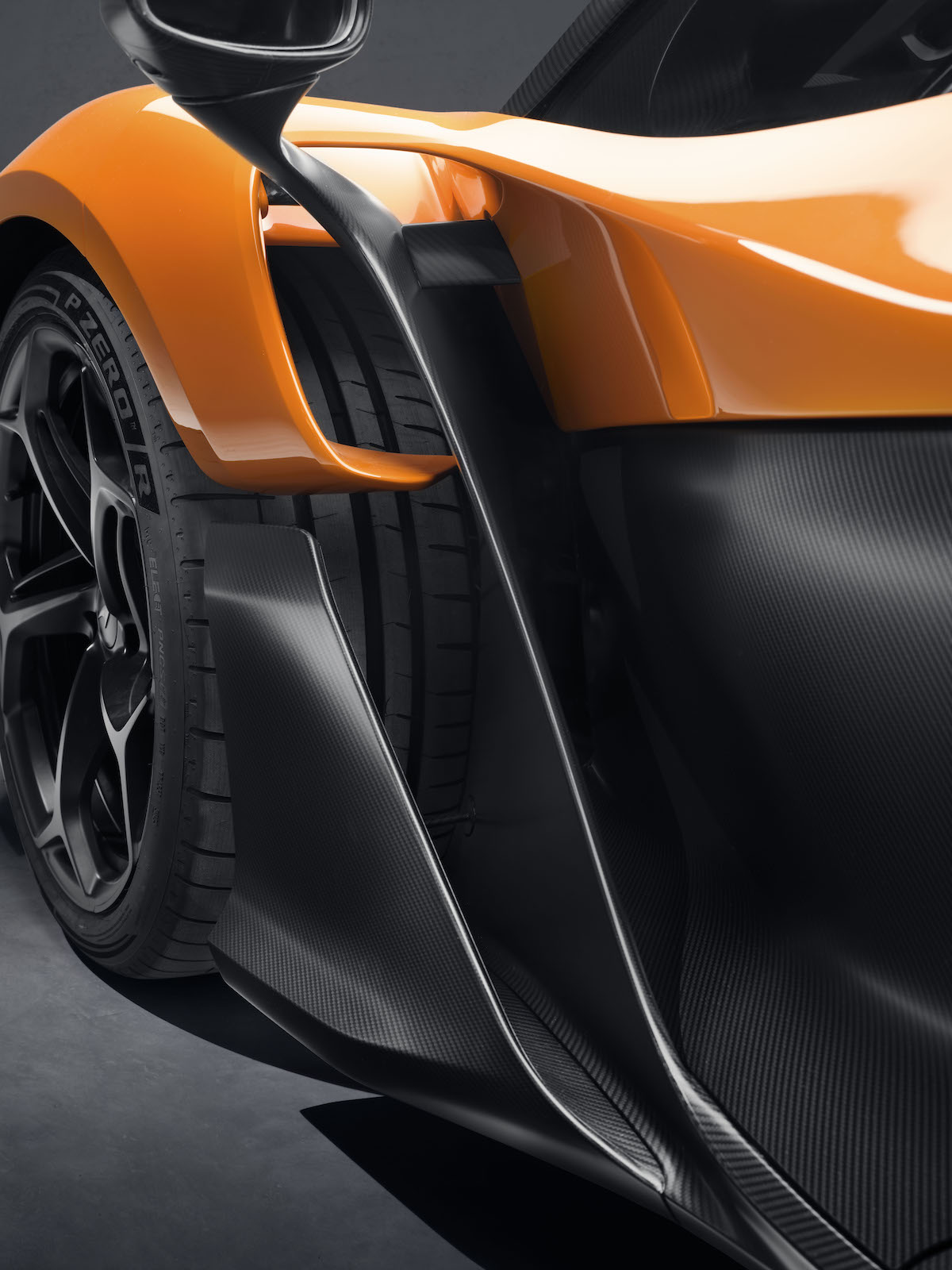
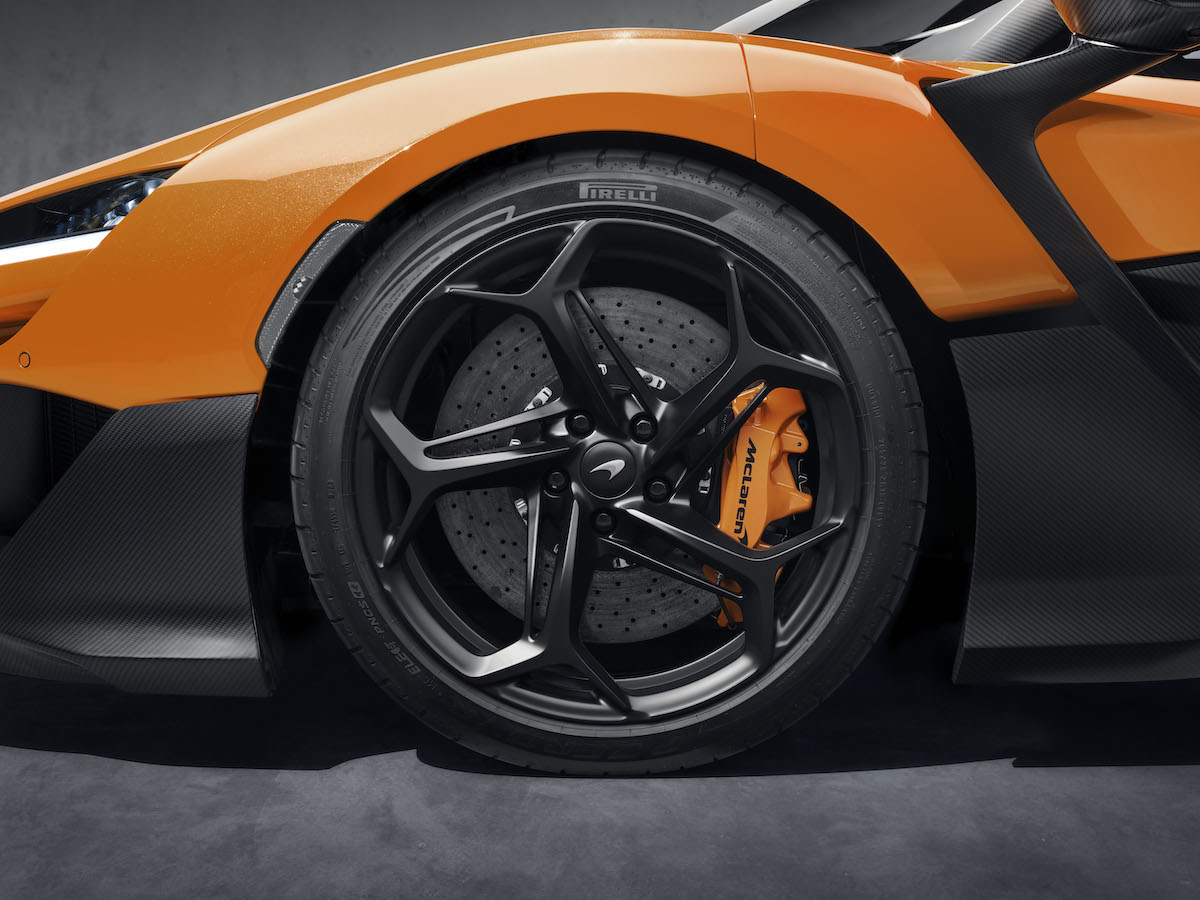
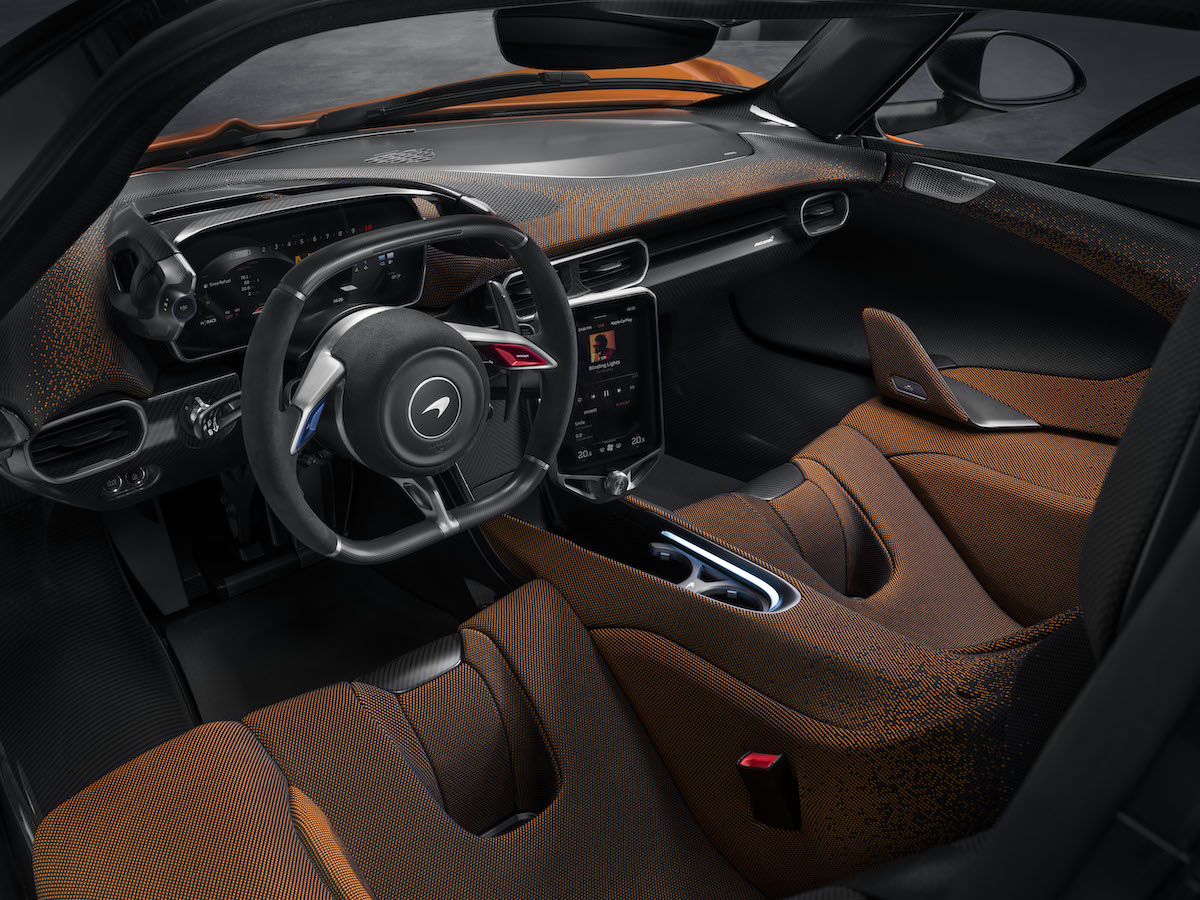
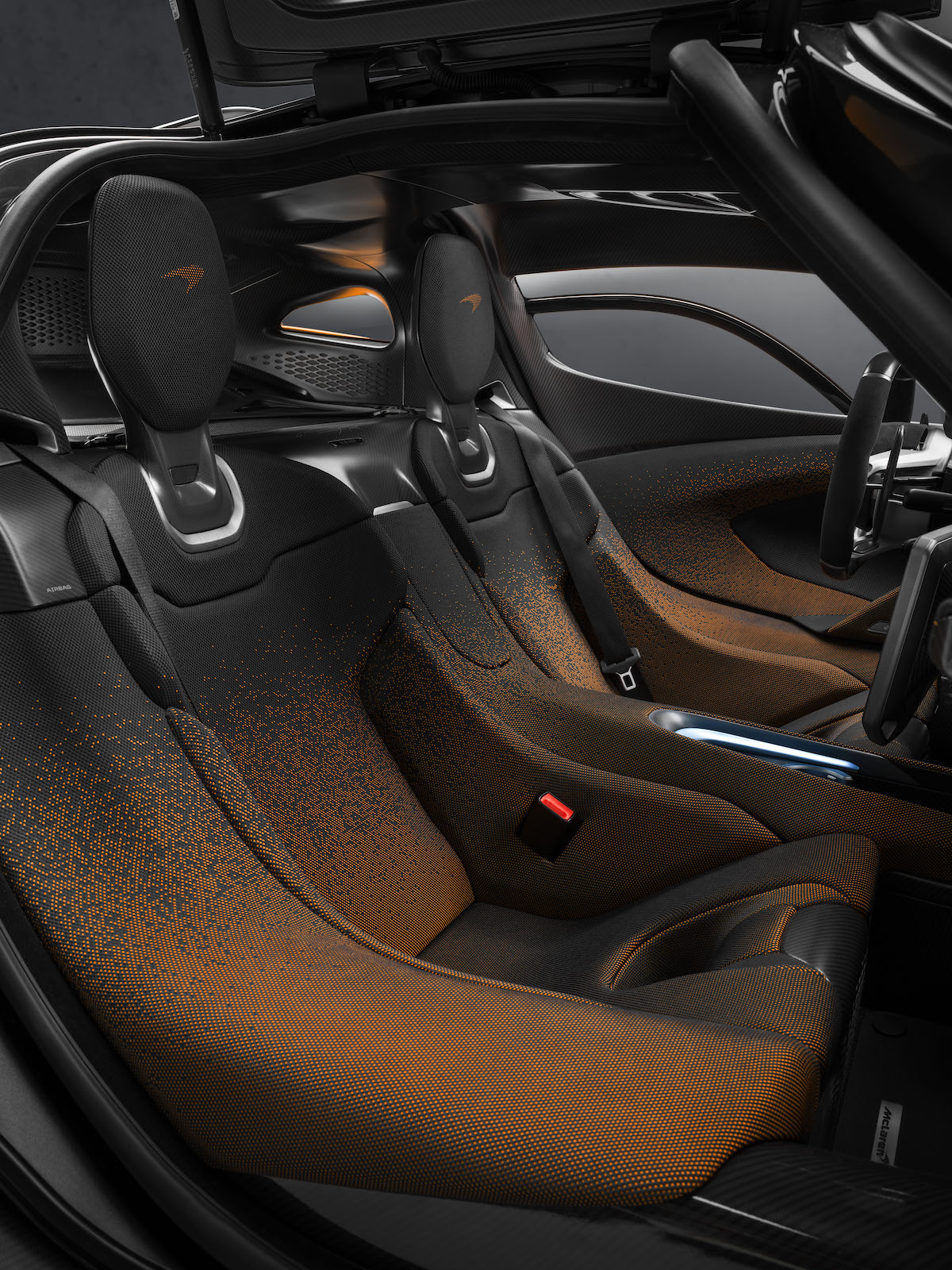
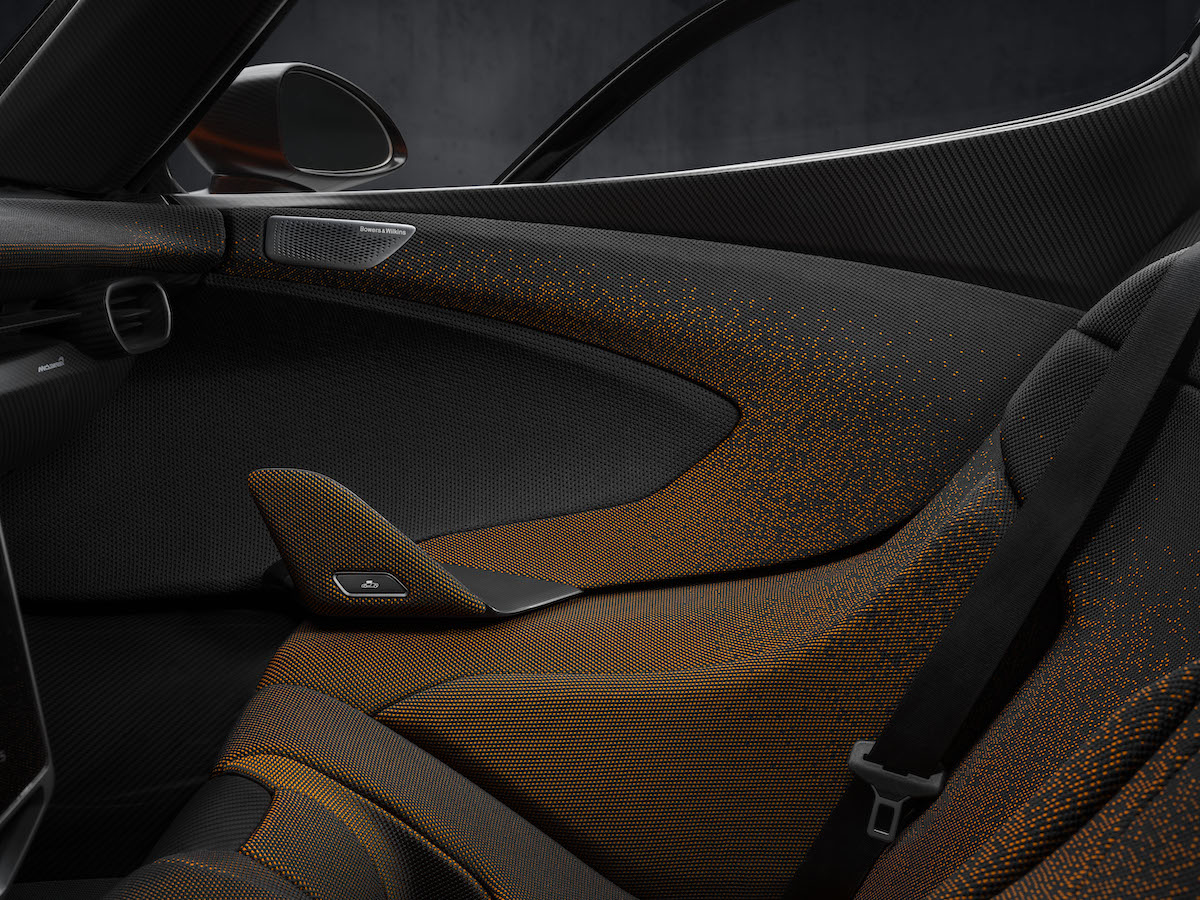
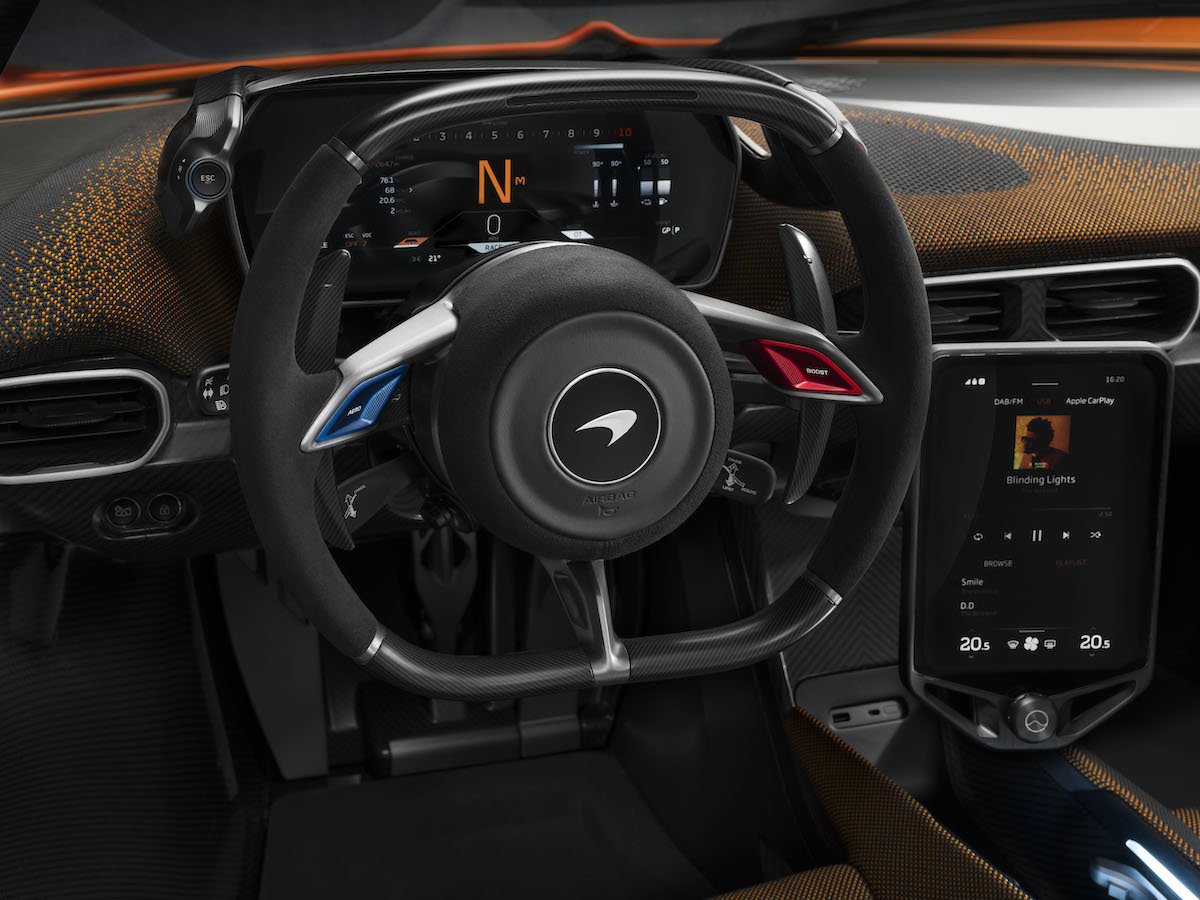
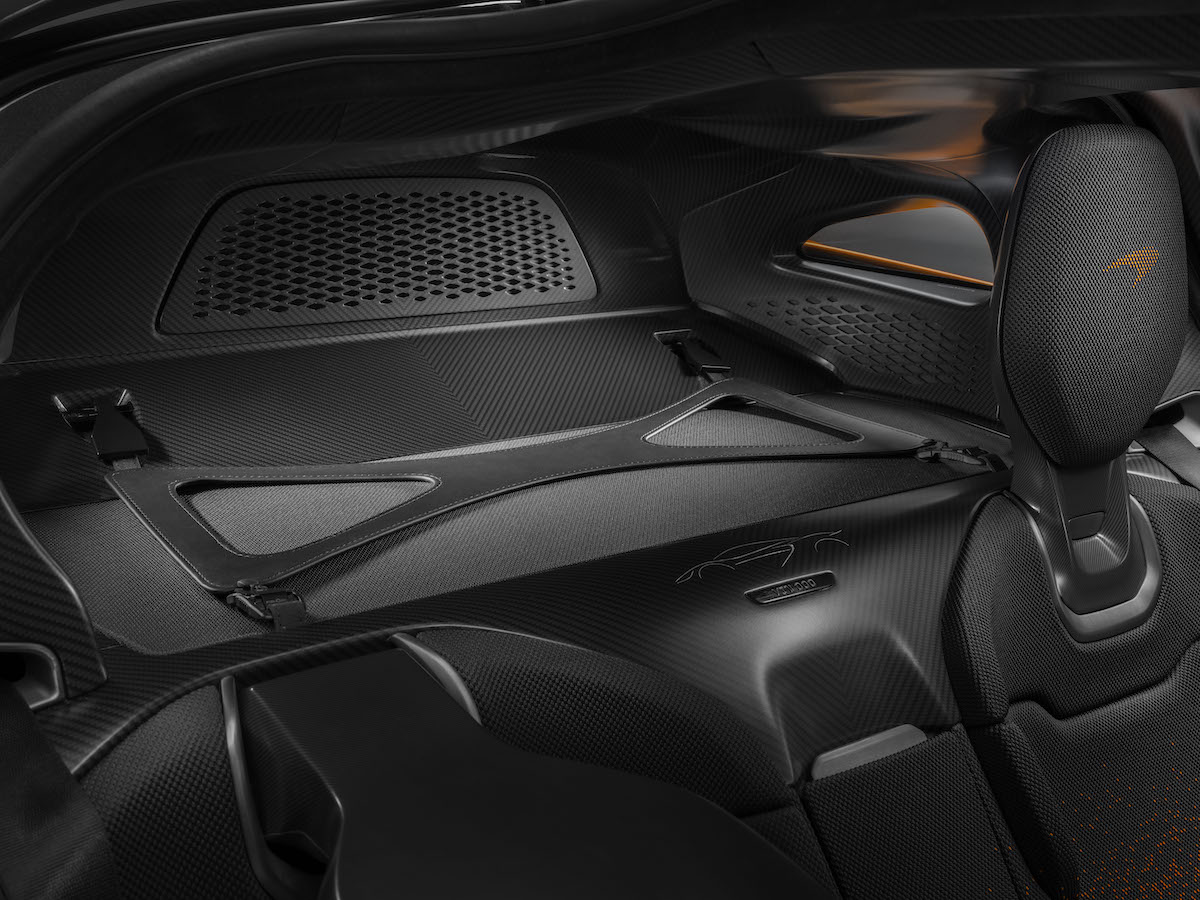
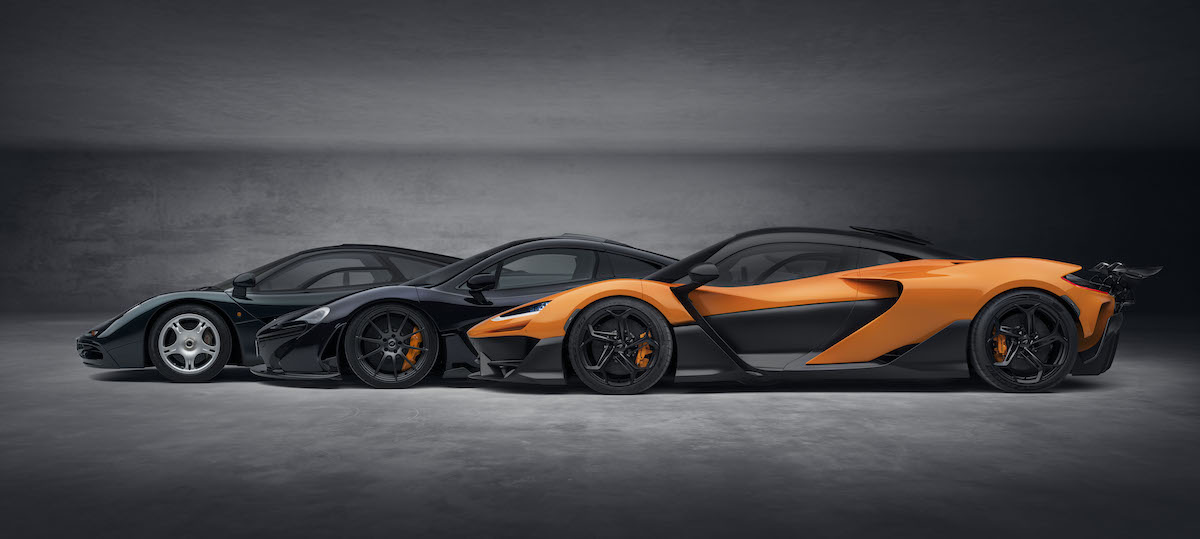
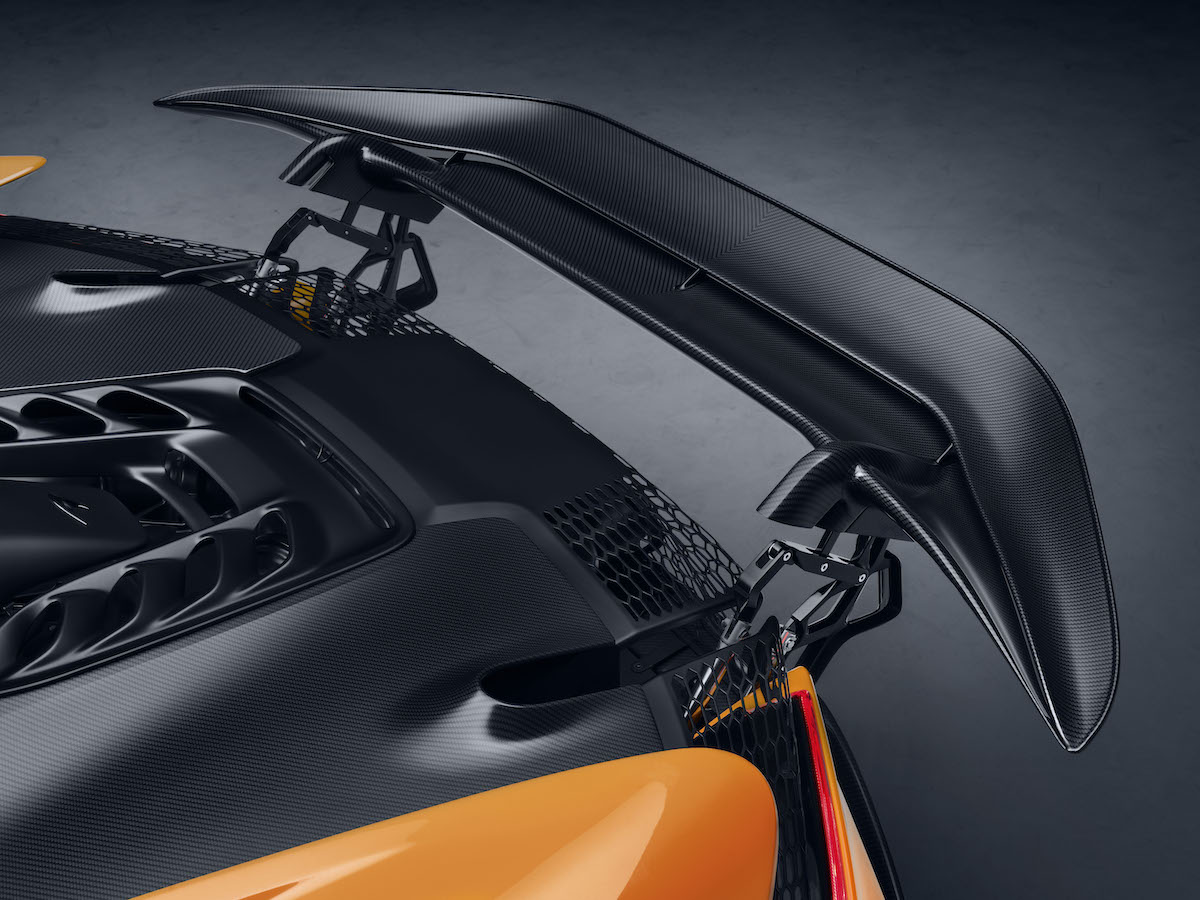

![New McLaren W1 Unveiled [Photo Gallery] New McLaren W1 Unveiled [Photo Gallery]](https://motoringchronicle.com/wp-content/uploads/bb-plugin/cache/New_McLaren_W1__the_real_supercar-12-1-panorama-fc96d08c1e9c6fbe34331d5dac868ecf-2k3pu87t5dhn.jpg)
![New McLaren W1 Unveiled [Photo Gallery] New McLaren W1 Unveiled [Photo Gallery]](https://motoringchronicle.com/wp-content/uploads/bb-plugin/cache/New_McLaren_W1__the_real_supercar-12-1-panorama-fc96d08c1e9c6fbe34331d5dac868ecf-qtfuzaxbyoir.jpg)
